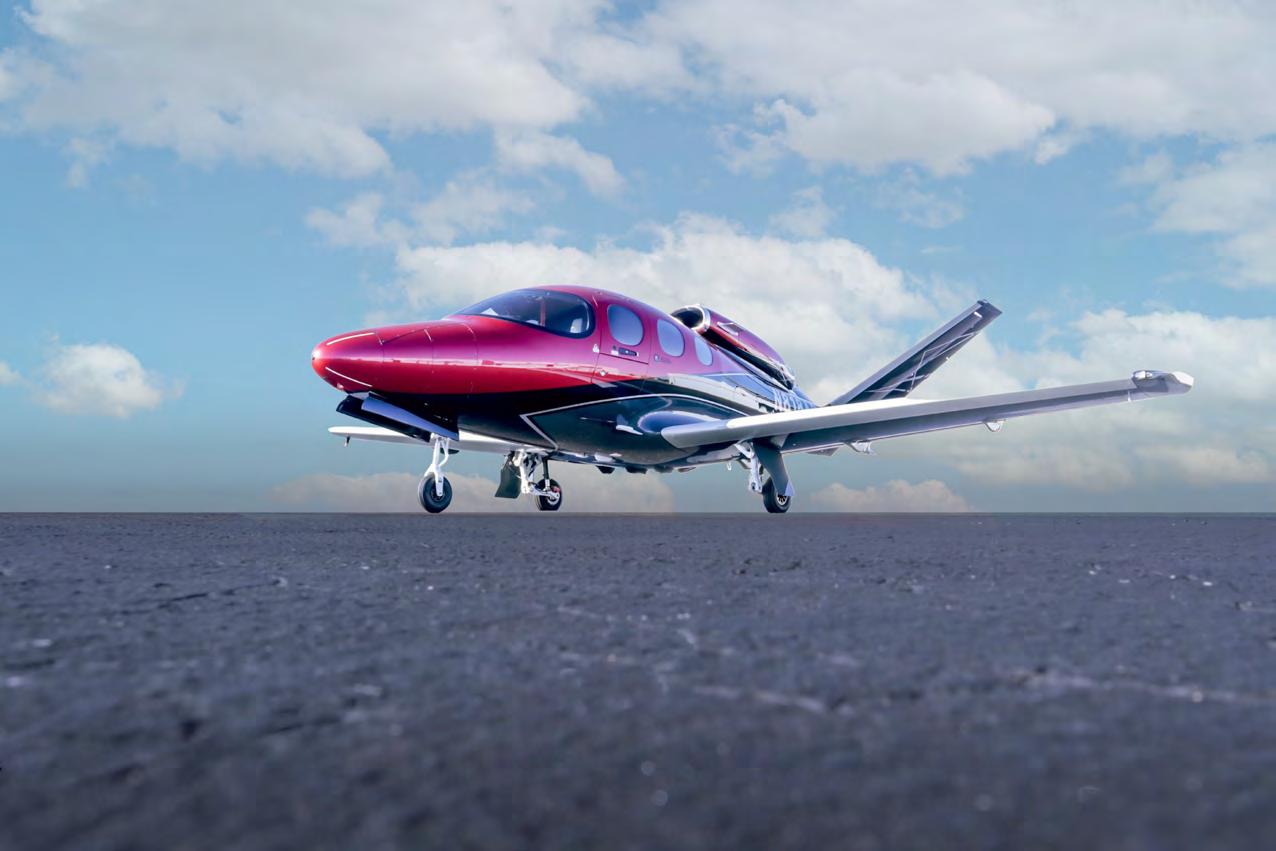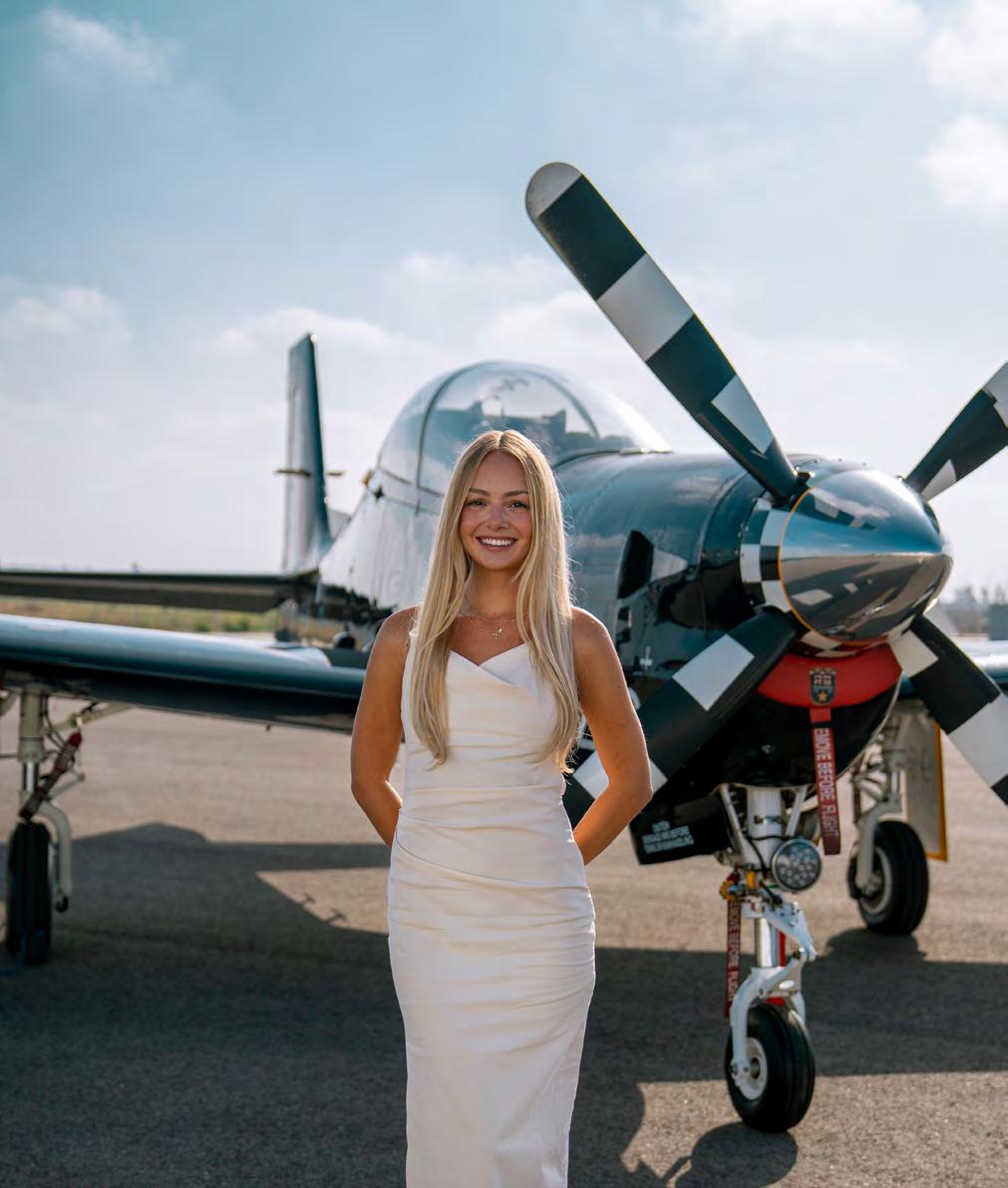


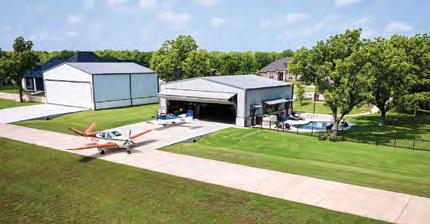









To list your group’s event on a space available basis, please send your event notice with date, time, place w/city and state, contact name, and phone number to: Calendar, In Flight USA, P.O. Box 5402, San Mateo, Calif. 94402, or email vickie@inflightusa.com.
Note: Calendar includes only information available by our press date. Confirm the status before attending.
July 2-6: Battle Creek Field of Flight Air Show & Balloon Festival, Battle Creek, MI, U.S. Air Force Thunderbirds, F-35A Lightning II Demonstration Team, U.S. Army Parachute Team Golden Knights, fieldofflight.com
3: Radio Dubuque Air Show & Fireworks Spectacular, Dubuque, IA, F-35A Lightning II Demonstration Team, www. radiodubuque.com/air-show-2024
4: Thunder Over East Texas Air Show, Athens, TX, F-16 Viper Demo Team
5: Thunder Over Cedar Creek Lake Air Show, Mabank, TX, F-16 Viper Demo Team, ccveteransfoundation.org/thunderover-cedar-creek-lake-airshow
5-6: Duluth Airshow, Duluth, MN, U.S. Navy Blue Angels, F-22 Raptor Demonstration Team, www.duluthairshow.com
9-13: Feria Aeronautical International Rionegro (F-AIR), Rionegro, Antioquia, CO, F-16 Viper Demo Team
12-13: Pensacola Beach Air Show, US Navy Blue Angels, Pensacola, Florida
12-13: Bremerton Airshow, Bremerton, WA, DoFly Aviation, Erickson Aircraft Collection, bremertonairshow.com
12-13: Geneseo Airshow: The Greatest Show on Turf! Geneseo, NY, F-35A Lightning II Demonstration Team, nationalwarplanemuseum.com/airshow
16: Visit Atlantic City Soar & Shore Festival, Atlantic City, NJ, FIGHTERJETS, INC. , Randy W. Ball, Misty Blues All Woman Skydiving Team, Third Strike Wingwalking
18-20: Pistons and Props, Janesville, WI, pistonsprops.com
19-20: Wings and Eagles Airshow, Klamath Falls (Kingsley Field), OR, U.S. Air Force Thunderbirds, F-35A Lightning II Demonstration Team
19-20: Milwaukee Air & Water Show, Milwaukee, WI, U.S. Navy Blue Angels, F-22 Raptor Demonstration Team, mkeairwatershow.com
21-27: EAA AirVenture Oshkosh, Oshkosh, WI, F-22 Raptor Demonstration Team, USMC F-35B Lightning II, www. eaa.org/airventure
23: Wings Over Warren/Cheyenne Frontier Days, Cheyenne (F.E. Warren AFB), WY
25-27: Tri-City Water Follies Air Show, Pasco, WA, F-16 Viper Demo Team, waterfollies.com
August 1-3: Boeing Seafair Air Show, Seattle, WA, U.S. Navy Blue Angels, www.seafair.org
2-3: Wings Over Marquette, Marquette, MI, Warbird Thunder Airshows & Chris Thomas Airshows
9-10: Rumble Over the Redwoods, Humboldt County Airport, rumbleovertheredwoods.com
9-10: Marine Corps Base Hawaii Air Show, MCAS Kaneohe Bay, HI
12-12: Pensacola Beach Air Show
Pensacola Beach, FL U.S. Navy Blue Angels
15-17: Pacific Airshow Gold Coast
Gold Coast, AU, Aarron Deliu
16-17: Wings Over Camarillo, Camarillo, CA wingsovercamarillo.com
16-17: Props and Pistons Festival, Akron, OH, www.flyohio.org
22-23: Airshow of the Cascades Madras, OR, 10g Aerosports/MKT Aerobatics Ltd, Patriots Jet Team
23-24: Quad City Air Show, Davenport, IA, U.S. Air Force Thunderbirds, www. quadcityairshow.com
23-24: Air Dot Show New York, Montgomery, NY, F-22 Raptor Demonstration Team
31-Sep 1: Cleveland National Air Show, Cleveland, OH, U.S. Air Force Thunderbirds, www.clevelandairshow.com
2-4: Commercial UAV Expo, Caesars Forum, Las Vegas, NV, Commercial Drone Exhibits and Demonstrations www.expouav.com
5-6: Thunder Over the Waves, Wildwood, NJ, NJ
19: US Aircraft Expo Denver, CO, Sheltair Aviation, Scottsdale, AZ usaircraftexpo.com/denver2025
OCTOBER
Oct 3-5: Pacific Air Show Huntington Beach, pacificairshowusa.com
10: US Aircraft Expo San Diego, Carlsbad, CA, usaircraftexpo.com/sandiego2025/

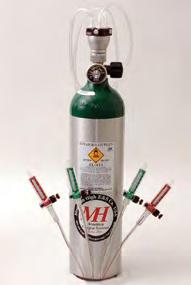
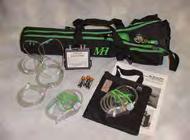


Since being featured on the cover of InFlight USA magazine in March 2024, life and business have both taken off in incredible ways. Over the past year, I’ve closed over $12 million in aircraft sales — ranging from single engine Certified and Light Sport Aircraft to midsize and heavy jets like Citations and Gulfstreams — proving that personalized, strategic brokerage still thrives in today’s evolving aviation landscape.
As the founder and president of Cielo Blu, I’ve leaned into my role not only as a broker but as a designer, project manager, and advisor for a diverse clientele. I’ve sold both my own inventory and aircraft on behalf of clients, averaging 1–2 aircraft transactions per month. What’s been especially interesting in the past year is that — despite broader economic concerns — the new
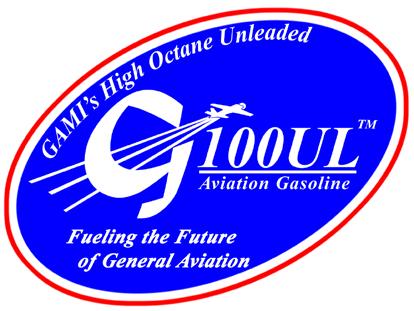
and pre-owned aircraft market continues to show strength. Buyers remain active and motivated, and we aren’t seeing a significant slowdown in either demand or deal velocity.
One of the most exciting projects I’ve had the privilege of leading was the acquisition, refurbishment, and sale of a Citation CJ2. We purchased the aircraft in Switzerland in 2023 and had it disassembled and shipped in two shipping containers to California. I managed the full refurbishment: new paint, a custom-designed interior, fresh inspections and overhauls. Seeing that vision come to life was deeply rewarding, and even more so when the aircraft went under contract just days after being listed for sale. That moment was a perfect intersection of creativity, business acumen, and client trust.
This year was also a major person-
al milestone: I completed my flight training and earned my Private Pilot License. One of the highlights of that journey was ferrying a Tecnam P-Mentor across the country from Florida to California with my dad, Mark DiLullo, owner of Threshold Aviation Group (and also my flight instructor.) It was an unforgettable bonding and flying experience — one I’ll always cherish. I’m currently working on my Seaplane Rating in an Icon A5, and next up are my Instrument (IFR) and Multi-Engine Ratings as I continue to grow as a pilot.
Right now, Cielo Blu has a robust inventory including Tecnam P-Mentors, Tecnam P2010 TDI, Cessna 172Rs, and an EMB Tucano — a warbird-style turboprop that’s been gener-
Continued on Page 9


GAMA Releases First Quarter Shipping, Billing Report
AOPA Urges FAA to Enhance Aircraft registry Privacy
Final Ruling Preserves Avgas Availability in California
EAA Special Section: AirVenture Highlights to See and Do










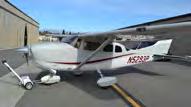








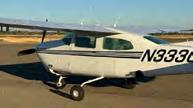
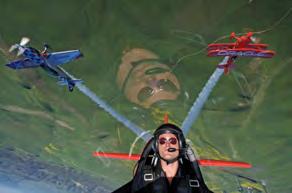


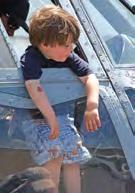
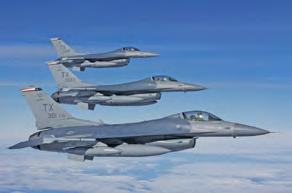
All was going well for the twin brothers working towards a career in aviation. These 18-year-old boys had been building time for advanced ratings but had hit a roadblock. They had initially cobbled up $900 bucks to buy a 1941 Taylorcraft L-2, a cheap-to-fly time-builder. A few more bucks and a trade, landed them a 1942 Aeronca L-3, a bit more like the Champ they had learned to fly in. But the needs of commercial, instrument and CFI training demanded a plane with an electrical system, six-pack, and avionics. One brother was working at a major FBO while the other continued to run the family retail store. The FBO brother hooked up with a skilled mechanic at the FBO who had just completed re-covering his 1955 Piper Tri-Pacer, which the mechanic offered to sell to the twins for the princely sum of $4,500. Superbly equipped with a full panel, a Narco SuperHomer (new fangled VOR thingy) having seven transmitting crystals, an additional VHF transmitter with 27 crystals, an ADF and marker beacon receiver, this PA-22 was a gem. Best of all, IT HAD A STARTER! How about that, no more hand-propping! Beautifully painted in high gloss white with bright pink (yes PINK, the mechanic ran out of red and mixed it with left over white paint), N707P quickly earned the nickname “Boobie” by an airport smart---, a call sign even used by the control tower. As a single young guy (yep, this writer is one of the twins) I loved it. For those readers who may be offended, I invite you to visit your safe room and hug your crying towel. By selling everything they owed, borrowing from family and committing to an impoverished life (good practice for a future CFI) “Boobie” started aviation careers that continue to this day.
A condition of allowing the twins to buy his beloved Tri-Pacer, the mechanic demanded we become experts in how to take care of it. This included significant mechanical training and a requirement to write our own normal and emergency checklist. This mechanic’s great training remains with this writer to this day. The emergency procedures were to be written with the principle that the first three steps of any emergency procedure would be committed to memory and enable the pilot to stay airborne long enough to look at the remainder of the checklist.
System knowledge and memorizing the first three steps came into play early one morning. Having heavily rained the night before, this writer expected to drain water from the fuel tanks. With only one wing tank drain and a drain at the carbu-
retor gas bowl, the Tri-Pacer was known to collect water, corrected later by a mandatory Airworthiness Directive requiring additional quick drains. After draining water to the point of where I should be good, I took off to practice precision landings in prep for an upcoming Commercial checkride.
While climbing out on the runway heading, about 700 feet above the airport, I switched tanks to the one without the drain because it had more fuel in it… a truly stupid move. The engine suddenly ran rough and quit. Not high enough to turn back and with only buildings in front of me, I ran the three critical memory actions …fuel …fire …air.
Immediately pitching the nose down and realizing I was a victim of water contamination, the mechanic’s technical training came to the forefront. The gas collector bowl was probably full of water, now blocking the flow of fuel from both fuel tanks. Switching back to the original tank did not result in a re-light. I had fire (mags on) and air (carb heat on). I knew the engine primer bypassed the carburetor, injecting directly into the intake manifold. I quickly pulled out the primer and pushed it forward. The engine barked and backfired but ran for a few seconds. Realizing I had flooded the engine, the next inward stroke was slower. The engine ran and backfired as it ingested water. I was, in effect, creating a manual fuel injection system. Now down to about 300 feet AGL, I was able to level off and slowly turn back to the airport, unable to reach for the microphone to answer the tower’s call to ask if I needed assistance. In less than a minute, the engine began to run normally, having spit out unwanted water. A call to the tower and an immediate landing was followed by a taxi to the ramp. It was only after engine shutdown that I realized I could not get out of 07Pop, as my legs were shaking and unsteady.
What is the lesson to learn? First, when conducting the preflight and draining water, I had thought “this should do the job.” I have NEVER again used the word “should” when conducting a preflight. To the reader, how is your system knowledge? Do you really know how your fuel system works? Why do you have a fuel pump? Does your fuel pump deliver fuel to the injectors or simply supplement flow to the engine-driven fuel pimp? Given the other two steps in the “fuel …fire …air,” scenario, do you know how those three critical systems work? My “technically advanced” Tri-Pacer is
Continued from Page 6
an almost comical shadow of the past when compared to modern light aircraft. Equally important in today’s modern aircraft is the electrical system. Maybe your engine uses a simple magneto system, but more and more, electronic ignition is being utilized. Where does that electrical power come from? Do you have two alternators? If so, do they feed independent electrical buses? Can one electrical bus transfer power to a secondary bus given a single alternator failure? How would you manage an electrical fire?
Let’s talk about flying IFR, perhaps with advanced avionics and a sophisticated autopilot. Are you completely comfortable when selecting autopilot modes? Do you know what is going on if your pitch control starts to feel “loose” while flying IFR? Do you know your basic pitot static instruments will indicate differently if you use alternate static? Do you know if your plane even has an alternate static? This writer does a lot of flight test prep work with the owners of Technically Advance Aircraft (TAA) and frequently hears that “my plane does not have a pitot static system but uses an air data computer, which utilizes GPS data… seriously! Last, in a long line of operational questions, where do you keep your emergency checklist? If you are like most amateur


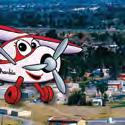
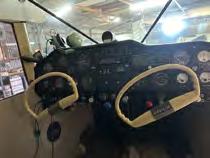
An example of the “fancy” cockpit panel of a 1955 Piper Tri-Pacer, in which the twins began to learn commercial, instrument and CFI training, as well as aviation mechanics and safety and emergency protocols. (This is not the airplane the twins purchased. The photo is courtesy planesales.com)
pilots, it is neatly contained in the POH, stuck in a pocket behind the pilot’s seat. Does that sound like a good choice?
Perhaps you are picking up on a theme? The FAA is increasingly testing knowledge of “how it works” in the oral part of a checkride. The Airman Certification Standard (ACS) for all checkrides now includes a significant number of “Knowledge” and “Risk” elements deal-
Continued on Page 18



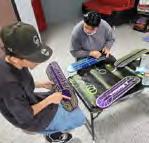
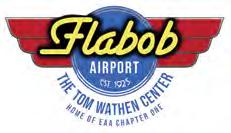





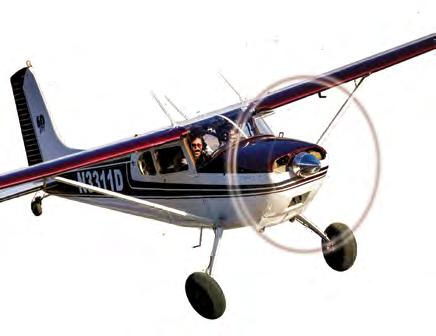



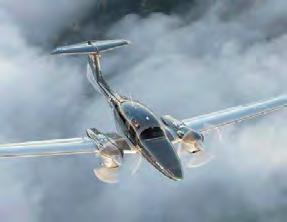


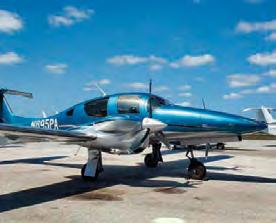
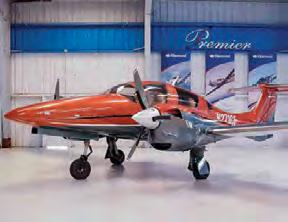


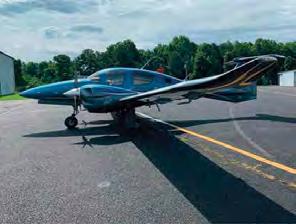

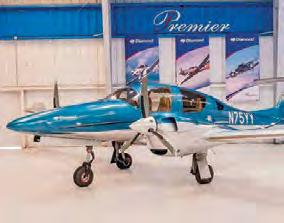
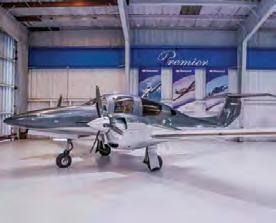


Continued from Page 4
ating a lot of excitement among buyers.
This July, I’ll be attending EAA AirVenture Oshkosh, which remains one of my favorite events of the year. Beyond the aircraft, technology, and incredible community of aviators, what I most look forward to is The Gathering — a gala fundraiser supporting the Young Eagles, EAA’s inspiring initiative to introduce youth to the magic of flight. The program has flown millions of kids since its inception, and being part of an effort that fuels the next generation of aviators is an honor that brings it all full circle.
Looking back on the past year, I feel immense pride — not just in the numbers, but in the relationships built, risks taken, and dreams realized. As always, the sky isn’t the limit. It’s just the beginning!
To contact Cielo Blu for any inquiries on how to buy or sell your aircraft:
Kayla DiLullo
Email: Kayla@cieloblu.aero
Phone: (909) 680-9919
Cielo Blu Instagram: @cieloblu.aero
Kayla DiLullo Instagram: @flywithmekd

By Yash K. Shah
Across the United States, the landscape of general aviation is quietly eroding. Small airports — once the lifeblood of recreational flying, pilot training, and aerial innovation — are vanishing at an alarming rate. What used to be vibrant hubs filled with the scent of avgas and the sound of propellers turning over on sunlit weekends are now being replaced by strip malls, housing developments, and industrial complexes. Runways that launched dreams are slowly disappearing under layers of concrete.
The numbers alone tell a sobering story. Since 1980, America has lost over half of its public-use airports. In 1990, there were more than 5,800 general aviation airports across the country. Today, fewer than 3,300 remain as per latest reported on the FAA
website. The trend is not isolated to rural towns — major metropolitan areas like Los Angeles, Chicago, and Miami have each witnessed the quiet closure of multiple GA airfields. For thousands of pilots, instructors, and aviation enthusiasts, these closures mean longer flights to reach a viable airport or giving up flying altogether.
Several forces are driving this decline. As cities expand and land values skyrocket, small airports become easy targets for real estate developers. What was once an open space for aviation is now seen as lucrative ground for shopping centers or suburban sprawl. Airports that were once considered regional assets are now regarded by surrounding communities as nuisances — noisy relics of another era standing in the way of progress. Local politics and
Continued on Page 18


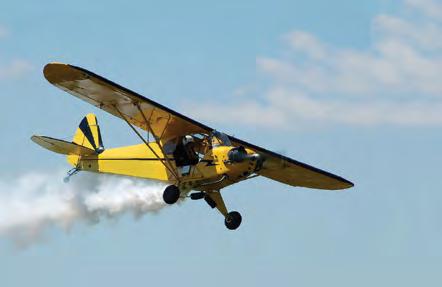


































This editorial space is typically dedicated to current issues facing General Aviation or, in many instances, the National Airspace System as a whole. That was the plan for our July issue as a multitude of issues are certainly open for discussion. Covering current issues is important to this writer, as it is to the staff and tradition of In Flight Publishing. In Flight USA is quite different from most other monthly publications, in that the editorial cut-off date is just a few days before the publication date. This means In Flight USA is more of a news publication than contemporary monthly magazines with editorial cut-off dates up to 90 days prior to publication. This practice keeps our staff up to date and helps this writer cover subjects of immediate concern. I also track daily newsletters sent through e-mail from AOPA and Flying Magazine, press releases, and other sources. Needless to say, aviation news items covered by the media are also monitored closely, as well as Congressional reports and current Notices of Proposed Rulemaking.
discovery and acquisition of knowledge. Perhaps the following words serve as an invitation for you to learn more about the name of “Langewiesche” and the lessons William and his father, Wolfgang, have contributed to aviation. I fully acknowledge that some of the background information is courtesy of the Flying magazine newsletter.
William possessed his father’s love of aviation and writing. William Langewiesche was born on June 12, 1955. For the past 35 years, he was a leading investigative writer.











It would be a considerable understatement to say that there is no current news upon which to comment. An abundance of comment-worthy subjects are offered, such as: funding for the FAA, appointment of a new FAA administrator (now becoming controversial), well-known difficulties within the ATC system, continuing accidents within the world’s airline community, increased regulations proposed by FAA Medical to further restrict flying for both amateur and pro pilots plus the ever expanding drone community (the fastest growing sector of aviation), and local airport issues. Add to this list of potential topics recent announcements celebrating the mass use of autonomous electric flying taxicabs, and editorial fodder abounds.
Getting the story in the location it happened was the hallmark of Langewiesche’s career. He “lived” the stories he wrote. The enduring themes of Langewiesche’s work are war reporting, the threat of nuclear weapons proliferation, aviation safety (the crashes of ValuJet 592, EgyptAir 990, the Space Shuttle Columbia, Air France 447, Malaysia 370, and the Boeing 737 Max), and marine shipping (piracy and ship-breaking). His books steered clear of war but expanded on nuclear weapons proliferation. His Atlantic piece on EgyptAir 990 earned him the National Magazine Award for Reporting in 2002, and “Rules of Engagement” in Vanity Fair won him the same award in 2007. He was a finalist for this and other awards every year between 1999 and 2008. As a professional pilot, William was much in demand as a flight instructor, and he delighted in tackling the worst weather with his instrument flying students. This writer must admit to learning much about journalism from William, often mimicking the style and honesty of William Langewiesche in my own amateur attempts to enlighten through the written word.






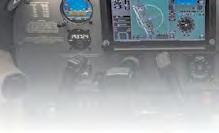


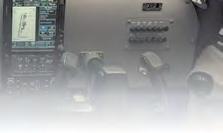
The challenge of picking what to write about is “where to start.” Frankly, it had been this writer’s intent to issue a “midterm” report card on how all of these various national projects are going. But the quest for currency changed those intentions upon learning (just hours before writing this month’s opinion) that award-winning journalist and aviation writer, William Langewiesche, had passed on June 15 at the relatively early (by today’s standards) age of just 70 years old. This writer not only knows of the remarkable career of Mr. Langewiesche, but also credits much of my beginnings and continued skills in aviation to his father, Wolfgang Langewiesche. The mere mention of the name “Langewiesche” brought back memories of a past full of
While William served as a literary guidepost, it was his father, Wolfgang, who served as my aviation guide. Born in Düsseldorf, Germany, in 1907, he was a graduate student in the United States during the late 1920s and migrated to America in 1935. He was a graduate of the London School of Economics and earned his master’s degree from Columbia University. He was in a doctoral program at the University of Chicago when he decided to learn to fly and pursue a career in aviation. Wolfgang Langewiesche wrote for Air Facts magazine, an aviation safety-related publication. Wolfgang’s Air Facts’ articles were the basis for most of his book Stick and Rudder, an aviation classic, which I hope to re-introduce to readers who need to understand that flying is an “art,” not just a list of skills used
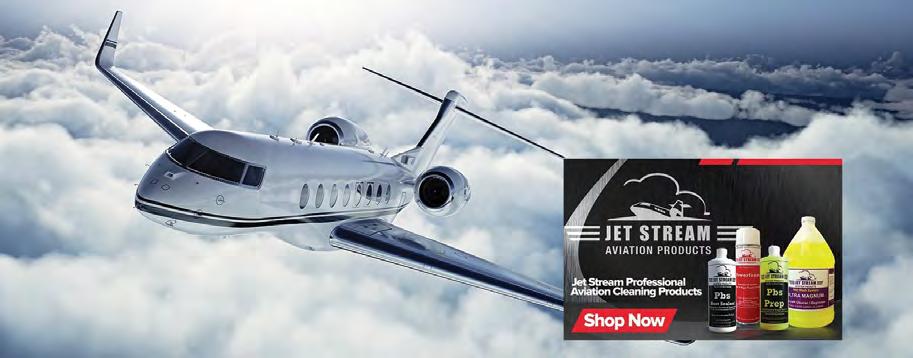
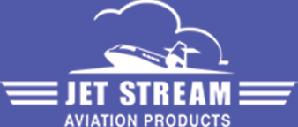


JET STREAM AVIATION PRODUCTS, INC
Aircraft Detailing Products And Supplies
Customer Service And Ordering Line: 972-542-2400 Or Shop Online at: www.jetstreamproducts.com
Sept 7, 2025 | 11 a.m. to 4 p.m.
June 15, 2025 • 11 a.m. to 4 p.m.
Open Cockpit is when the museum’s visitors can view our famous aircraft including A-3 Skywarrior, A-4 Skyhawk, A-6 Intruder, A-7 Corsair, Harrier jump-Jet T-39 Saberliner, Mustang P-51 ¾ scale, Cessna 0-2 and a Mig-15.
Open Cockpit is when the museum’s visitors can view our famous aircraft including A-3 Skywarrior, A-4 Skyhawk, A-6 Intruder, A-7 Corsair, Harrier jump-Jet T-39 Saberliner, Mustang P-51 ¾ scale, Cessna 0-2 and a Mig-15.
Open Cockpit is when the museum’s visitors can view our famous aircraft including A-3 Skywarrior, A-4 Skyhawk, A-6 Intruder, A-7 Corsair, Harrier jump-Jet T-39 Saberliner, Mustang P-51 ¾ scale, Cessna 0-2 and a Mig-15.
Short Solent Flying Boat walk through tour for an additional fee.
Open Cockpit is when the museum’s visitors can view our famous aircraft including A-3 Skywarrior, A-4 Skyhawk, A-6 Intruder, A-7 Corsair, Harrier jump-Jet, Hiller UH-12 E Helicopter,T-39 Saberliner, Mustang P-51 3⁄4 scale, Cessna 0-2, and Mig-15.
Short Solent Flying Boat walk through tour for an additional fee.
Open Cockpit is when the museum’s visitors can view our famous aircraft including A-3 Skywarrior, A-4 Skyhawk, A-6 Intruder, A-7 Corsair, Harrier jump-Jet T-39 Saberliner, Mustang P-51 ¾ scale, Cessna 0-2 and a Mig-15.
Short Solent Flying Boat walk through tour for an additional fee.
Short Solent Flying Boat walk-through tour for an additional fee.
Activities during Open Cockpit include:
Open Cockpit is when the museum’s visitors can view our famous aircraft including A-3 Skywarrior, A-4 Skyhawk, A-6 Intruder, A-7 Corsair, Harrier jump-Jet T-39 Saberliner, Mustang P-51 ¾ scale, Cessna 0-2 and a Mig-15.
Activities during Open Cockpit include:
Short Solent Flying Boat walk through tour for an additional fee.
Open Cockpit is when the museum’s visitors can view our famous aircraft including A-3 Skywarrior, A-4 Skyhawk, A-6 Intruder, A-7 Corsair, Harrier jump-Jet T-39 Saberliner, Mustang P-51 ¾ scale, Cessna 0-2 and a Mig-15.
Open Cockpit is when the museum’s visitors can view our famous aircraft including A-3 Skywarrior, A-4 Skyhawk, A-6 Intruder, A-7 Corsair, Harrier jump-Jet T-39 Saberliner, Mustang P-51 ¾ scale, Cessna 0-2 and a Mig-15.
Activities during Open Cockpit include:
Short Solent Flying Boat walk through tour for an additional fee.
Short Solent Flying Boat walk through tour for an additional fee.
• Color Guard.
Activities during Open Cockpit Day include:
Activities during Open Cockpit include:
• Color Guard
• Color Guard.
Short Solent Flying Boat walk through tour for an additional fee.
Open Cockpit is when the museum’s visitors can view our famous aircraft including A-3 Skywarrior, A-4 Skyhawk, A-6 Intruder, A-7 Corsair, Harrier jump-Jet T-39 Saberliner, Mustang P-51 ¾ scale, Cessna 0-2 and a Mig-15.
• Color Guard.
Activities during Open Cockpit include:
• Santa Clara Masonic Lodge will o er refreshments for purchase.
Activities during Open Cockpit include:
• Alfredo’s Catering will be offering refreshments for purchase.
• Santa Clara Masonic Lodge will o er refreshments for purchase.
Short Solent Flying Boat walk through tour for an additional fee.
• Color Guard.
• Live music by The Friends of Ken Band.
• Live music by The Friends of Ken Band
• Santa Clara Masonic Lodge will o er refreshments for purchase.
Activities during Open Cockpit include:
• Color Guard.
• Live music by The Friends of Ken Band.
Activities during Open Cockpit include:
• Live music by The Friends of Ken Band.
• Color Guard.
• European Train Enthusiasts exhibit.
• Santa Clara Masonic Lodge will o er refreshments for purchase.
• Oakland Airport Fire Department Display.
• Color Guard.
• European Train Enthusiasts exhibit.
• European Train Enthusiasts exhibit.
• Santa Clara Masonic Lodge will o er refreshments for purchase.
• Southern Alameda County Radio Controllers RC aircraft display.
• Santa Clara Masonic Lodge will o er refreshments for purchase.
• European Train Enthusiasts Exhibit
• Live music by The Friends of Ken Band.
• Southern Alameda County Radio Controllers RC aircraft display.
• Color Guard.
• Live music by The Friends of Ken Band.
• Santa Clara Masonic Lodge will o er refreshments for purchase.
• ORCA Ham Radio exhibit and demonstration.
• Southern Alameda County Radio Controllers RC aircraft display.
• European Train Enthusiasts exhibit.
• Live music by The Friends of Ken Band.
• Southern Alameda County Radio Controllers Model Aircraft Exhibit
• ORCA Ham Radio exhibit and demonstration.
• Live music by The Friends of Ken Band.
• European Train Enthusiasts exhibit.
• ORCA Ham Radio exhibit and demonstration.
• Simulators available for an additional fee
• Mercedes Car Club Display
• European Train Enthusiasts exhibit.
• Santa Clara Masonic Lodge will o er refreshments for purchase.
• Simulators available for an additional fee
• Simulators available for an additional fee
• Southern Alameda County Radio Controllers RC aircraft display.
• Southern Alameda County Radio Controllers RC aircraft display.
• European Train Enthusiasts exhibit.
• Live music by The Friends of Ken Band.
• Ham Radio Demonstration
• Southern Alameda County Radio Controllers RC aircraft display.
• ORCA Ham Radio exhibit and demonstration.
• ORCA Ham Radio exhibit and demonstration.
• Southern Alameda County Radio Controllers RC aircraft display.
Open Cockpit day is a GROUPON Blackout day
• ORCA Ham Radio exhibit and demonstration.
• European Train Enthusiasts exhibit.
• Simulators available for an additional fee
• Simulators available for an additional fee
• Simulators available for an additional fee
Open Cockpit day is a GROUPON Blackout day
• ORCA Ham Radio exhibit and demonstration.
Open Cockpit day is a GROUPON Blackout day
• Simulators available for an additional fee
• Southern Alameda County Radio Controllers RC aircraft display.
Earhart Road, Oakland, CA 94621
Open Cockpit day is a GROUPON Blackout day
Open Cockpit day is a GROUPON Blackout day
oaklandaviationmuseum.org 8252 Earhart Road, Oakland, CA 94621 • oaklandaviationmuseum.org
• ORCA Ham Radio exhibit and demonstration.
• Simulators available for an additional fee
March 6, 2022 • Noon to 4 p.m. 8252 Earhart Road, Oakland, CA 94621 • oaklandaviationmuseum.org
• Simulators available for an additional fee Open

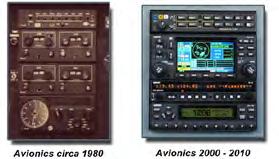
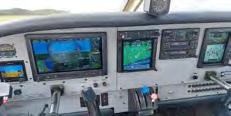

Coast International Airport (KFPR), 3800 Saint Lucie Blvd., Fort Pierce, FL 34946 Phone: 772-464-3148 • Fax: 772-464-3197 • Se Habla Español tcavionics@gmail.com • www.treasurecoastavionics.com

Assured vertical separation from terrain and other aircraft is one of the cornerstones upon which our national airspace system is built. For this reason, consistent and precise altitude control is critical to aviation safety. As important as adherence to an assigned altitude is, we humans stray from perfection for a variety of reasons, and compliance is occasionally compromised. Once a deviation is recognized, prompt and accurate recovery to the correct altitude is essential.
This month, CALLBACK presents reports in which altitude deviations are triggered by multiple and varied issues. Seemingly minor errors in instrument settings, lapses in automation management, or a variety of human factors can have serious consequences, including terrain warnings, go-arounds, and ATC interventions. As you read these narratives, see if you can identify what the causes of the altitude deviations were, and witness how these crews recovered, utilizing their experience, knowledge, and diligent return to standard procedures.
Part 121 – Red over Red
This air carrier crew encountered several challenges and distractions on approach to SFO, resulting in an undesired automation mode and flight path. They successfully stabilized the approach and executed a safe landing.
• ATC cleared us to descend via arrival then at EDDYY transition to the Tipp Toe visual 28L. We set 6000 ft. Approaching EDDYY, ATC told us to descend to 4000 ft. PF (FO) select LVL CHG. ATC advised us traffic Aircraft Y going to 28R. While looking for the traffic, ATC asked us to slow down to 210 kts and if we have the airport and bridge in sight and the traffic. Finally saw the traffic and told ATC airport, bridge and traffic in sight. ATC told us to maintain separation and cleared us for the visual. So we dialed in 1800 ft on the altitude window. We were focusing to make sure we don’t overshoot the path because of the traffic threat. Then ATC told us to slow down to 180 then 160 kts until the bridge. PF (FO) asked for gear and flaps configuration to slow down. Confirmed no overshoot. PM (Captain) realized we were inside the approach and asked to set TDZ while heads down to do the configuration
changes asked by PF. ATC told us to switch to Tower. Both did not realize we were still in LVL CHG. (Tasked saturated) Accomplished landing checklist before 1000 ft. Approximately 4 NM from the runway. I saw 4 red dots then realized we were low. It was around 750 ft. I told the FO to disconnect autopilot and arrest the descent and hand fly [to] get back on path. Realized we never re-engaged VNAV. Tower on their side told us to check altitude. Corrected the issue. Re-established the glide path. Stable and cleared to land. Landed normally. Exited runway and taxied to the gate. Debriefed it. Identified [that] traffic was the primary reason for distraction and ATC due to multiple instructions at the same time.
This A330 pilot highlights two independent altimeter misconfigurations during descent. The oversight caused an undesired flight path and the crew executed a corrective maneuver.
• I was the second Capt/Relief Pilot on a ZZZZ turn. The PF was the FO. The CA and FO both were utilizing Original Equipment Manufacturer (OEM) procedures and independently set the altimeter setting on descent. They both independently set the wrong altimeter setting. I did not catch the error as I was attempting to tune and turn on the pilot-controlled lighting at the field. They made all the correct altimeter related call outs to include the FAF crossing which they called accurate/checked. However the altimeter was set with the incorrect information and we were low on profile. This caused a low terrain warning on approach and a subsequent go-around. Further ops were normal.
An air carrier crew reported leveling too soon after a change to their departure procedure. FMC loading and crosscheck was a factor.
• We had a change to our departure SID, which caused us to redo the box. We did not go back and confirm CLB (climb) VIA the SID. There was an altitude of 3,000 ft. set in the window, when it should have been 15,000 ft. Neither one of us caught this. On departure, while level at 3,000 ft., NorCal [Approach] told us to climb
Continued from Page 12
to avoid an Altitude Alert for terrain. We caught our error and climbed before any Altitude Alerts happened in the cockpit. Suggestions: Better review of departure clearance, once the box has been redone.
This A319 pilot encountered severe turbulence resulting in a deviation from the cleared altitude.
• …We encountered severe turbulence with updrafts that led the aircraft to an overspeed state. The flight was assigned to fly directly to the ZZZ VOR at FL350. There was no significant weather painted on the radar until we would reach the ZZZ VOR. The flight started to experience light occasional turbulence, so I decided to turn on the fasten seatbelt sign. About 38 NM east of ZZZ1 VOR, the aircraft altitude and airspeed began increasing rather quickly. I selected Mach 0.76 using selected airspeed knob to help reduce the airspeed increasing trend. Even through the aircraft engines were spooling back to attain Mach 0.76, the aircraft airspeed and altitude kept increasing, which led to the first overspeed warning. As we started to recover from the first upset, the aircraft entered another updraft and overspeed once again. I disconnected the autopilot and autothrust and rode the updraft upwards until it subsided at FL364. The event duration was about 20-30 seconds long. We immediately notified ZZZ Center of the upset event, which the controller began warning other aircrafts of the event in that area. We then contacted the flight attendants to learn about the status of the cabin. FA (Flight Attendant) A reported that no one was injured, none of the overhead bins ejected any of its contents, nor did any O2 masks drop from their PSUs. Since no one was injured and the flight was less than 200 NM from ZZZ, I did not find it necessary to declare an inflight emergency and continued to ZZZ where a safe landing was made.
This Falcon 900 Captain highlights the impact of fatigue on flight operations that led to an unintentional deviation in altitude and heading.
• I got up for work at XA:00A.M. We would have four legs that day from our home airport, ZZZ, to ZZZ1, to ZZZ2, back to ZZZ1, then return home to ZZZ. Put the airplane to bed, drive home and back in the bed at XB:00 PM. Toward the end of a nineteen-hour day on the last leg from ZZZ1 to ZZZ we were cruising
at 40,000 feet at night with no weather and smooth air. With 30 minutes to go, I decided to brief the approach into ZZZ with the other pilot. With our heads down looking at the iPad in my lap we began the approach briefing. The next thing I hear is the over-speed warning going off. I look up and we are in a nose low, 30-degree bank to the right. I’ve got a real-life unusual attitude at 40,000 feet at night! It was reflex to come back on the throttles, level the wings, pitch the nose up and climb back to 40,000 feet and get back on course. I was hoping that ATC didn’t notice, but how could they not notice? By the time the over-speed warning went off, I lost 1200 feet of altitude and turned about 30 degrees off course. They said nothing. I said nothing. The adrenaline rush kept me alert for the rest of the flight. I am confident that fatigue was the main contributing factor…The rest of the flight was uneventful.
This GA pilot learned an invaluable lesson for future flights.
• I was flying a small aircraft for my first IFR solo cross country. … After departing JAX flying as filed at 6000 ft, I was asked to descend down to 4,000. I noticed I would be flying straight into the clouds - which by the looks of them seemed fine. I am an instrument rated pilot and current for IFR flying. I advised Orlando ATC [of] my request to deviate from buildups - they agreed. I deviated and then I requested an altitude change to 3000 to avoid the large build ups. I requested further deviations for weather avoidance several times but I was denied. I found myself in a rain shower which pushed my plane down due to the downdrafts. I was rapidly descending at this point. My airspeed was in the yellow and the aircraft was getting harder to control. While trying to maintain control over the aircraft, I advised ATC my concerns for the safety of flight, requesting an altitude change, I was denied again and advised to fly at 3,000 ft which I flew. I believe if I requested to stay at 6000 when the controllers gave me 4000 initially instead of descending down into the worse weather, I might not have broke[n] aircraft separation.
The reports featured in CALLBACK are offered in the spirit of stimulating thought and discussion. While NASA ASRS does not verify or validate reports, we encourage you, our readers, to explore them and draw your own conclusions.










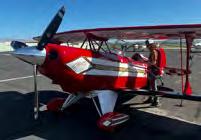
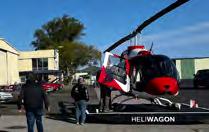
The transition away from leaded aviation gasoline affects every link in the general aviation supply chain — from fuel producers and distributors to airports, FBOs, pilots, aircraft owners, and mechanics. To support industry-wide understanding, the Eliminate Aviation Gasoline Lead Emissions (EAGLE) initiative now offers tools and data to help stakeholders track the transition and assess its scope, scale, and impact.
The new Interactive Toolkit, available at flyEAGLE.org, offers regularly
updated insights into the U.S. piston fleet, fuel infrastructure, airport fuel availability, 100LL production and logistics, sales volumes, per-capita data, and more. The toolkit is searchable, sortable, visual — and most importantly — designed to clarify how the transition is unfolding across the national aviation landscape.
What’s available now:
• Airport Fuel Availability – U.S. airports offering 100LL, UL94, mogas, or G100UL
• Refinery & Distribution Map – Cur-
rent avgas production and distribution network
• Sales Volume & History – State-bystate and national fuel usage back to the 1960s
• Piston Aircraft Registry – Ability to search by airframe or engine to assess fleet eligibility
• Mechanics & IA Capacity – Data to understand workforce availability for compliance
• Per Capita Fuel Usage – Information to identify heavy-use states like Alaska, Montana, and Wyoming
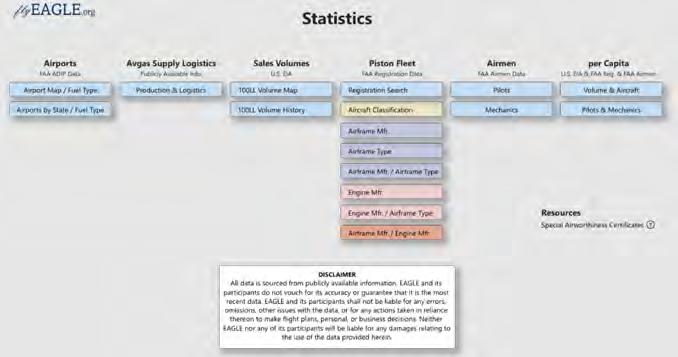
By Yash K. Shah
Pilots have long relied on GPS to navigate accurately through complex airspace, but GPS vulnerabilities such as signal jamming, spoofing, and interference increasingly compromise navigation safety. As the aviation industry grapples with these challenges, quantum navigation emerges as an innovative and promising alternative, poised to transform airborne navigation systems fundamentally.
Quantum navigation harnesses quantum mechanics principles through atom
interferometry, a sophisticated process that measures ultra-cold atoms to determine precise motion and orientation. Unlike conventional inertial navigation systems (INS), quantum inertial sensors maintain remarkable stability and accuracy without external references. This capability is particularly advantageous in environments where GPS signals are weak or unavailable, such as urban canyons, mountainous terrain, or polar regions.
Leading aerospace firms and research organizations are actively advancing quantum navigation technologies.
Piston Aviation Fuel Initiative (PAFI) Progress
The site also provides a summary of the FAA’s Piston Aviation Fuels Initiative (PAFI) fleet authorization process and the testing status of the LyondellBasell/VP Racing high-octane unleaded aviation gasoline (UL100E). The data highlights progress across key testing areas, including detonation and performance, durability, flight testing, and materials compatibility with components such as O-rings, OEM wing tanks, and paint. This information is also available at flyEAGLE.org/resources.
The site will be updated as new data is available.
Eliminate Aviation Gasoline Lead Emissions (EAGLE) is a comprehensive government-industry initiative consisting of the aviation and petroleum industries and U.S. government stakeholders, and a wide range of other constituents and interested parties, all working toward the transition to lead-free aviation fuels for piston-engine aircraft by the end of 2030 without compromising the safety or economic health of the general aviation industry. To learn more, visit: https://flyEAGLE.org.
The EAGLE initiative now offers tools and data to help stakeholders track the transition and assess its scope, scale, and impact. Find it at flyEAGLE.org/resources. (Image courtesy EAGLE)
Honeywell, for instance, successfully demonstrated quantum inertial sensors with position accuracies measured in centimeters, significantly outperforming traditional INS solutions. Similarly, Northrop Grumman and Lockheed Martin are developing compact, robust quantum sensors tailored explicitly for aviation use. The Defense Advanced Research Projects Agency (DARPA) has also initiated projects aimed at creating fully operational quantum inertial navigation systems capable of sustained, long-duration flights without external GPS input.
Recent case studies highlight quantum navigation’s practical benefits. In experimental flight tests, quantum sensors demonstrated sustained precision during GPS outages, enabling aircraft to navigate safely without drifting significantly. One notable test conducted by Honeywell demonstrated uninterrupted, high-accuracy navigation in simulated GPS-denied environments for extended periods, underscoring quantum navigation’s reliability and independence from vulnerable external signals. However, the widespread adoption
Continued on Page 37

























On May 23, the General Aviation Manufacturers Association (GAMA) published the First Quarter 2025 General Aviation Aircraft Shipment and Billing Report. The results for the first three months of 2025 when compared to the same period in 2024 show increased shipments across all sectors and an increase in the overall value of


aircraft shipments.
Aircraft shipments through the first quarter of 2025, when compared to the same period in 2024, saw piston airplanes increase 19.3 percent with 353 units, turboprops increase 23.1 percent with 133 units, and business jets increase 11.0 percent with 141 units. The value of airplane deliveries through the first quarter of 2025 was $5.04 billion, an increase of 25.7 percent.
Helicopter shipments through the first quarter of 2025, when compared to the same period in 2024, saw piston helicopters increase 1.9 percent with 54 units, and turbine helicopter increase 1.5 percent with 133 units. The value of helicopter deliveries was $770 million.
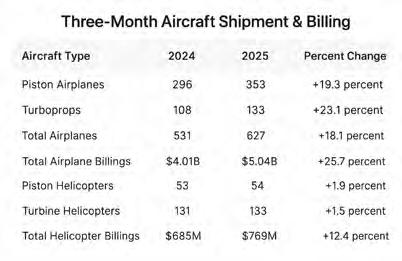
By Jim Moore, AOPA
The names and addresses of aircraft owners should be withheld from public view by default, AOPA asserted in comments responding to a request from the FAA that drew hundreds of opinions for and against the privacy policy that was announced March 28.
The FAA Reauthorization Act of 2024 directed the FAA to develop a program allowing aircraft owners to voluntarily request that personally identifiable information (PII) including the owner’s name and address be withheld from the public. The FAA initiated the program on March 28, and
now registered owners who set up an account with the Civil Aviation Registry Electronic Services (CARES) can use that system to request their contact information be redacted from the public database.

Names and addresses of aircraft owners should be withheld from public view by default, not by special request, AOPA asserted in comments responding to a request from the FAA that drew hundreds of opinions for and against the privacy policy that was announced March 28. (Photo by Chris Rose, courtesy AOPA)
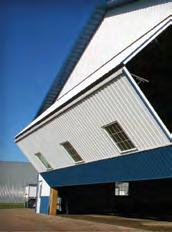


The new policy offers a degree of protection for owners who choose to seek it, in much the same way that the Drivers Privacy Protection Act of 1994 cut off the ability of the general public to look up the names and addresses of vehicle owners by license plate. The 1994 law was passed following abuses of state motor vehicle registries, which allowed bad actors to stalk individuals for nefarious purposes — including the 1989 murder of actress Rebecca Schaeffer, whose killer obtained her address from the California Department of Motor Vehicles.
“We fail to see why there should be a different standard for the owners and pilots of privately owned and operated aircraft,” AOPA Vice President of Regulatory Affairs Murray Huling wrote in comments submitted in response to the FAA request. Huling asked the FAA to take the privacy measure a step further, redacting or otherwise withholding PII by default, rather than requiring owners to request this protection.
“At a fundamental level, AOPA does not believe it is appropriate for any entity, aside from applicable fed-
eral regulators, law enforcement, and organizations that provide aviation safety-related and requested services, to have access to the PII currently available in the Aircraft Registry without the express permission of the owner of that information. Under the current dissemination and display policy, the privacy, security, and safety of private aircraft owners and pilots are very much at risk,” said Huling.
The risk that public dissemination of PII poses to aircraft owners goes far beyond what car owners used to face,
Compelling content -

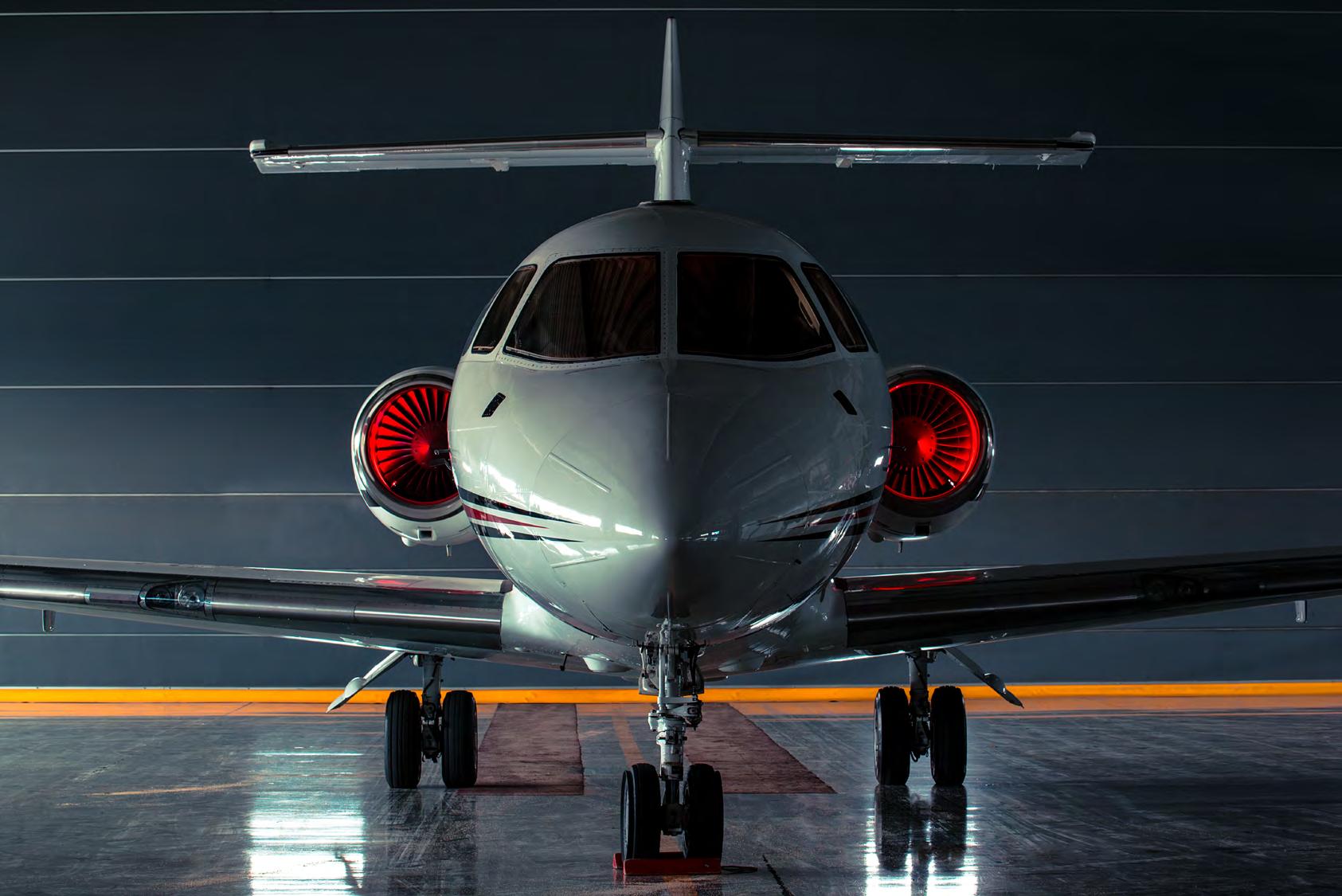
Professional Branding & Graphics
Powerful Web Sites & SEO
Social Media Management
Engaging Podcasts
Profitable Webinars
On-Site or Virtual Services
Studio Time Available in SLC
Sales Process Consulting & Tools articles, videos, and posts.
Continued from Page 7
ing with the operation of the aircraft. This writer wonders what is going to happen when, on a checkride, you are asked to describe the hydraulic system on a C-172. Of course, many will say, “the C-172 does not have a hydraulic system,” only to be left slumping in your chair when the DPE enquires about what makes the
brakes work.
It can get worse; do you know the C-172 has a hydraulic shock absorber associated with the nose gear, which is a required pre-flight item? This CFI spends a good deal of time helping pilots understand the “Knowledge” and “Risk” elements of the appropriate Airman Certification Standards. It is both surprising and disappointing to discover how many
� Available in both Qref® Book, Card and new iPad editions
� Over 50 years of professional experience in every checklist
� Written by Master CFIs with workflow and ease of use in mind
� Professional design, rugged construction
Beechcraft Bonanza A36 285HP1968-1983
Beechcraft Bonanza C/D 35 1951-1953
Beechcraft Bonanza J/K/M 35 1958-1960
Beechcraft Bonanza N/P 35 1961-1963
Beechcraft Bonanza V35 A/B 1966-1982
Cessna 150 1959-1977
Cessna 152 1978-1986
Cessna 172 Universal Universal
Cessna 172M 1973-1976
Cessna 172N 1977-1980
Cessna 172P 1981-1986
Cessna 172R 1998-2006
Cessna 172RG 1980-1985
Cessna 172S 1998-2006
Cessna 172S G1000 2005+
Cessna 177RG 1971-1978
Cessna 182P 1972-1976
Cessna 182R 1981-1986
Cessna R182 Skylane RG 1978-1986
Cessna 182RG Turbo 1979-1986
Cessna 182T Analog Gauges 2001+
Cessna 182T/G1000 2004+
Cessna 210N Centurion 1979-1984
Cessna Turbo 182T 2001+
Cessna Turbo 182T/G1000 2006+
Cessna Turbo 206H 1998+
Cessna Turbo 210M Centurion1977-1978
Cirrus SR20 Analog Gauges 2000-2003
Cirrus SR20 G1-G2 2003-2007
Cirrus SR20 G3 2007+
Cirrus SR20 Perspective 2008+
Cirrus SR22 G1-G2 2003-2007
Cirrus SR22 G3 2007+
Cirrus SR22 Perspective 2008+
Cirrus SR22 G3 Turbo 2007+
Cirrus SR22 Turbo Perspective 2008+
Diamond DA20 C1 1998+
Diamond Star DA40 2001+
Piper Archer II PA-28-181 1976-1994
Piper Archer III PA-28-181 1995-2002
Piper Arrow 180 PA-28R-180 1967-1971
Piper Arrow II PA-28R-200 1969-1976
Piper Arrow III PA-28R-201 1977+
Piper Arrow III Turbo PA-28R-201T1977-1978
students, for all ratings, have never seen their appropriate ACS and are flying with CFI’s who either do not know how planes work, or just do not take the time to share what can be lifesaving information.
So, what can be done in your world of flying to plan for that rare time when “things don’t work?” First, actually read, that means study, your POH or AFM. Don’t you have one? They are readily available from many aviation compa-
nies that provide all forms of aviation supplies. There are online providers that specialize in aircraft manuals dating back to the 1930s. Take time to understand what you are reading about your plane or the plane in which you are training. Give the emergency procedures a careful review and then try this writer’s system of “three life-saving memory steps.” While modern training has moved away from “memorizing” emergency procedures, take it from a pilot who has employed this system in real life… it works.
Continued from Page 9









Piper Arrow IV PA-28RT-201 1979-1982
Piper Arrow IV Turbo PA-28RT-201T1979-1990
Piper Cherokee 140 PA-28-1401964-1977
Piper Cherokee 150 PA-28-1501961-1967
Piper Cherokee 160 PA-28-1601961-1967
Piper Cherokee 180 PA-28-1801963-1973
Piper Dakota PA-28-236 1979-1994
Piper Cherokee Lance PA-32R-3001976-1978
Piper Navajo PA-31-310 B/C 1972-1980
Piper Navajo Chieftain PA-31-3501973-1984
Piper Saratoga SP PA-32R-3011980-1992
Piper Saratoga SP Turbo PA-32R-301T1980-1987
Piper Tomahawk PA-38-112 1978-1982
Piper Warrior 151 PA-28-151 1973-1977
Piper Warrior II PA-28-161 1976-1986
MANY MORE MODELS COMING SOON!

public pressure often prioritize shortterm economic gain over long-term aviation infrastructure.
But the issue isn’t just about lost runways; it’s about what those runways represent. Every small airport that closes takes with it a piece of aviation’s future. These are the places where student pilots log their first hours, where veterans of the sky pass on their knowledge, and where emergency services base their aerial assets. As they vanish, the pipeline for airline captains, flight instructors, and medevac pilots narrows. Fewer airports mean fewer opportunities for affordable flight training, and that pushes aviation further out of reach for the next generation.









Avidyne Entegra
Garmin G1000 Non-WAAS
Garmin G1000
Garmin G1000 WAAS
Garmin G600/G500
Cirrus Perspective by Garmin
Bendix/King KLN 89
Bendix/King KLN 90B
Bendix/King KLN 94
Garmin GMX 200
Garmin GPS 400
Garmin GNS 430

Garmin GNS 480
Garmin GNS 530
Garmin GTN 750/650
Garmin GX Series
Garmin MX 20
Garmin 300XL/250XL
AnywhereMap ATC
AvMap EKP IV / IV Pro
AvMap EKP V (coming soon)
AvMap Geopilot II / II Plus
Bendix/King AV8OR
Bendix/King AV8OR Ace
Garmin GPSMAP 96
Garmin GPSMAP 195
Garmin GPSMAP 196
Garmin GPSMAP 295
Garmin GPSMAP 296
Garmin GPSMAP 396
Garmin GPSMAP 495
Garmin GPSMAP 496
Garmin GPSMAP 696/695
Garmin Aera Series
Lowrance Airmap 2000C/1000
Lowrance Airmap 500/600C

Despite the bleak trend, the aviation community is not giving up without a fight. Organizations like AOPA, EAA and many others are ramping up their efforts to preserve GA airports, lobbying policymakers, educating the public, and championing the value of these facilities as engines of economic and educational growth. Meanwhile, some airfields are evolving — adding drone flight schools, STEM engagement programs, and electric aircraft infrastructure to adapt to changing times and attract a new audience.
The survival of general aviation doesn’t rest solely on policy or preservation. It relies on awareness, advocacy, and reinvention. Pilots must not only fly but also speak up, participate in local planning discussions, and share the importance of these airports beyond the aviation community.


If we don’t act, the places where countless aviation journeys began will disappear — quietly and irreversibly — until we are left wondering how an industry so vital to the fabric of American innovation lost its footing, one runway at a time.
By Jim Moore, AOPA
A California judge signed on May 30 an expected ruling against an environmental group’s effort to halt sales of 100LL aviation fuel at dozens of airports in the state, finding such a move is “premature” in light of industry opposition based on unresolved safety concerns.
Aviation advocates welcomed the decision by California Superior Court Judge Somnath Raj Chatterjee to preserve the availability of 100LL until a replacement is approved for use by all aircraft and “commercially available,” a key term at the heart of the case that the court defined broadly.

“AOPA was pleased to see the courts recognize the importance of ensuring continued availability of 100LL at California airports while we all work with the industry to navigate a safe transition to an unleaded future,” said AOPA President Darren Pleasance. “Prematurely forcing any unleaded fuel that is not yet fully tested across the existing aviation fleet adds unacceptable safety concerns.”
Chatterjee signaled the substance of his May 30 ruling in March, when his preliminary decision sided with the FBOs and fuel distributors serving two dozen California airports that opposed the effort by the Center for Environmental Health to force those airports to dispense — exclusively in many cas-
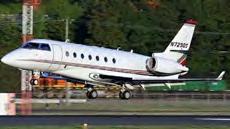

botajet@gmail.com Website & Blog: www.bertbotta.com https://www.facebook.com/BertBotta1 https://www.linkedin.com/in/bertbotta/ NetJets Pilots & F/A Facebook page: https://www.facebook.com/groups/447755025256768

es — G100UL unleaded aviation fuel made by General Aviation Modifications Inc. in lieu of 100LL.
CEH sought in January to invoke stipulations of a 2014 Consent Judgment that require FBOs and fuel distributors to supply unleaded aviation fuel with the lowest available lead content to all piston aircraft as soon as such fuel
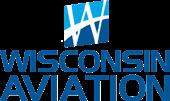


is both “approved” and “commercially available.” CEH argued that G100UL is just such a fuel based on FAA supplemental type certificate approval, and the limited distribution of G100UL that is now underway at three airports, two of them in California.
The G100UL STC does not apply to helicopters, the judge noted, which, while representing “only about 1.5 [percent] of the fleet… have an outsized importance to public health and safety.”
An STC, by definition, also does not apply to light sport aircraft or experimental aircraft, the judge noted. And, while the 2014 Consent Judgment refers specifically to American Society for Testing and Materials International standards, G100UL has not been subject to the ASTM specification approval process anticipated in the 2014 document.
“GAMI elected not to pursue an ASTM specification and has elected not to disclose certain specifications and information regarding G100UL. G100UL
Continued on Page 26









Continued from Page 16
thanks to the advent of ADS-B, which the FAA mandated in certain airspace in 2020. The mandate was imposed with assurances to AOPA that aircraft position data would be used only to enhance airspace safety and efficiency. In practice, however, the data has been used far more expansively.
“With increasing frequency, a pattern of misuse of personal registry information” has emerged, Huling noted, “often accompanied by the improper use of ADS-B tracking data, to confirm ownership and personal address for the purposes of collecting fees, filing frivolous lawsuits and questionable enforcement actions.” Huling wrote that these other uses undermine the core safety mission for which ADS-B was created: “The public availability of personal information on the Aircraft Registry and the improper use of ADS-B data simply acts as a strong deterrent for more pilots to equip their aircraft with ADS-B.”
More than 600 comments were
posted to the public docket by the June 4 deadline, many of them from individual aircraft owners echoing AOPA’s arguments. Airport operators seeking to automate invoices based on ADS-B data opposed the policy, and asked the FAA to ensure PII remains available so that automated billing can continue.
The Idaho Airport Management Association listed “cost recovery and billing” first among its “key concerns” about the new policy: “Billing transient aircraft for landing fees, customs fees, and tie-down charges requires reliable ownership information. Without it, our ability to recover legitimate costs diminishes — and those costs may instead fall on local users and taxpayers.”
The Collier County Airport Authority in Florida expressed a similar view, arguing that removing PII without an alternative means to access the information “would severely impair our ability to… enforce financial obligations: Many aircraft operators may exploit anonymity to evade payment of overnight
parking fees and landing fees, which are vital for airport funding and maintenance.”
Landing fees — automated by third-party service providers — have been imposed unilaterally and with little or no public discussion at many airports across the country, without justification of financial need based on balance sheets, or exploration of other options that airports may use to generate revenue.
Other concerns about withholding PII from the public aircraft registry include impairing the process of buying and selling aircraft, which requires verification of ownership.
Huling wrote that empowering aircraft owners with the ability to share that information selectively through the CARES system would address this concern.

n A v i a t i o n


temporary access to their PII,” Huling wrote. “There is precedent for this in FAA’s Limiting Aircraft Data Displayed (LADD) program, where an operator can specify individual vendors (i.e. flight tracking services) who can see their registration number information.”
Giving aircraft owners control over who can access their PII would also protect owners from another form of fraud related to purchase and sale of aircraft, Huling wrote: “AOPA is aware of at least one instance where a bad actor wrongfully claimed ownership of an aircraft through fraudulent means, likely using PII from FAA sources to file a fraudulent bill of sale and registration application.”

“AOPA believes the FAA should give owners control over their privacy and establish a system whereby owners can grant immediate, one-time, or


The FAA has not announced a timeline for what further action, if any, it will take in response to the comments received.
This is an ongoing story. Learn more at AOPA’s website, aopa.org or on the FAA website, faa.gov.









By Annamarie Buonocore
In the world of aviation, there’s an old saying: “Takeoffs are optional, but landings are mandatory.” As pilots, we spend hours mastering maneuvers, navigation, and systems. But when it comes to flight safety, precision, and professionalism, nothing matters more than the landing. And yet, for many new pilots in today’s digital training environment, proper landing technique has become harder to learn — and even easier to overlook.
Why Landing Deserves More Respect
Most aviation incidents don’t happen at cruise altitude. They occur in the landing pattern, where altitude is low, margins are slim, and the workload is high. From traffic conflicts and crosswind misjudgments to runway excursions and hard touchdowns, it’s the final few minutes that often test a pilot’s true capability. From my own journey as a student and as an aviation editor, I learned quickly that good landings don’t happen by accident — they’re built on visual awareness, controlled confidence, and repetition.
The Three Golden Rules for a Great Landing
While every aircraft and airport presents unique challenges, three fundamentals can make or break your approach:
1. Eyes Outside
A landing is a visual reference maneuver. You must judge altitude, alignment, and descent based on what you see — not what the gauges say. Look

Hops are easy. They’re a momentary separation of the tires from the runway surface in which they only rise a few inches. The pilot’s proper reaction to a hop is to ignore it. Hold full back elevator and idle power, let the tires settle back to the runway surface, and hope your passengers don’t notice. If they do, a nonchalant shrug is enough to let them know a hop is no big deal — you’ve got this situation fully under control. (Photography by Mike Fizer, courtesy AOPA)
down the runway, monitor your spacing in the pattern, and keep your head on a swivel.
2. Gentle Hands Win
Landings require finesse. Whether flaring or correcting for wind drift, small, smooth inputs are key. Over-controlling leads to bouncing or porpoising. Let the airplane fly — you’re guiding, not forcing.
3. Stay Aware of Traffic
In busy skies, the best landings happen in safe, well-managed patterns. That means listening closely on the radio, announcing clearly, and keeping your eyes out for aircraft that might not be doing either.
When Simulators Fall Short
There’s no denying that flight simulators and online training platforms have transformed aviation education. But here’s the truth: you can’t truly learn how to land in a sim. Why? Because landing is about spatial awareness, body feel, and environmental nuance — things no joystick or screen can replicate.
Instructors across the country have noted a growing trend: students showing up with thousands of sim landings but no real-world confidence. Simulators teach procedures. Real flying teaches judgment.
Don’t Overthink It — Fly It
One common pitfall in landing practice is overthinking. Students try to
micromanage every step — airspeed, pitch, flare timing — often leading to stiff, erratic control. The secret? Trust your instincts and training. The best landings happen when you’re focused, not frozen.
See It. Hear It. Feel It
Pattern flying is about total situational awareness. Are you on the correct downwind spacing? Is that Cessna turning base ahead of you, or someone else? Is the wind shifting? What’s the tower reporting? What’s your gut telling you? Visual scanning, radio discipline, and constant evaluation are essential.
Conclusion: Landing Isn’t a Checklist — It’s a Craft
So how do you become a better landing pilot?
• Fly real patterns often. Don’t avoid crosswinds — master them.
• Seek feedback from instructors who prioritize feel, not just form.
• Record your approaches and debrief them with others.
• Practice with intention: one pattern, one skill focus at a time.
• Consider specialized instruction from a CFI or program like Landing Doctor, which targets landing performance through repetition and critique.
In a world of digital distractions and fast-tracked checkrides, we must remember: every flight is judged by how it ends. The best pilots aren’t the ones with the smoothest takeoffs — but the ones who bring it home with grace, consistency, and control.
On Tuesday, June 10, U.S. Department of Transportation Secretary Sean P. Duffy launched the Federal Aviation Administration’s (FAA) first ever Industry Day events to bring companies together to help build a brand new, state-of-the-art air traffic control system. The event follows the FAA’s recent Request for Information seeking an integrator to lead this major modernization effort.
Secretary Duffy and Acting Administrator Chris Rocheleau called on the nation’s top innovators and companies to bring forward the best ideas, technologies, and expertise to modernize U.S. airspace — enhancing safety, reducing delays, and delivering the reliable, advanced system that air traffic controllers deserve.
“We are at a moment in time where we can truly make a difference in our
air traffic control system by building it brand new,” said U.S. Transportation Secretary Sean P. Duffy. “Bringing in the best and brightest to provide critical feedback on our plan will help ensure we get this right and are able to move at lightning speed. I appreciate all the industry leaders who participated this week and look forward to working together fix our aging system.”
“We’re all here today as part of a
commitment to take bold steps to build a new world-class air traffic control system,” said FAA Acting Administrator Chris Rocheleau. “A system that is grounded in safety, driven by innovation and prepared to meet the challenges of tomorrow.”
DOT expects to award a contract for the new ATC system integrator
and solution by Sept. 30. The meeting also followed the recent formation of the Modern Skies coalition, an industry-wide group formed in support of ATC transformation, which includes NBAA.
NBAA President and CEO Ed Bolen thanked DOT Secretary Duffy and FAA Acting Administrator Rocheleau for their leadership in calling the industry together for the dialogue focused on innovative ideas, new technologies and new procurement strategies for ATC transformation.
Bolen noted the unique circumstances that have heightened calls for transformation. “People sometimes ask, ‘What’s different this time?’” Bolen said. “They recall that the aviation community has previously held up ATC transformation as a priority, requiring a big investment.
“The answer is, we have witnessed a series of tragic accidents and troubling incidents that have focused not just the aviation community on transformation, but the White House, DOT, FAA – and the American public – on the urgency
of this matter as never before,” Bolen explained. “We know this moment serves as a call to action on a national imperative.”
Bolen added that the FAA has the authority to implement an expedited acquisition process for modernization, but has not fully used that authority in a manner that will be required to build a new ATC system on the ambitious timeline envisioned for the work.
“To move forward on transformation with urgency will require new thinking on processes and milestones,
with input from all end-users,” Bolen said. “This gathering marks a powerful step forward for building a brand-new air traffic control system.”
Continued on Page 43
Reflecting the event’s emphasis on collaboration, Bolen detailed some of the key challenges with the existing ATC system. For example, shortfalls in the implementation of new technologies for enhancing safety and efficiency are impacting not just the smaller community airports used by business aviaContinued from Page 10 Continued from Page 21
to operate a machine or a computer. The basic facts about flying that Wolfgang emphasized in Stick and Rudder (first published in 1944) have withstood much criticism since then but still has many lessons to teach. Wolfgang taught “Theory of Flight” to U.S. Army aviation cadets in ground school at the Hawthorne School of Aeronautics in Orangeburg, South Carolina, during World War II, and test flew F4U Corsairs for the Vought Corporation. He later worked for Cessna as a test pilot and contributed several articles for Flying Magazine. In the 1950s, he became Reader’s Digest’s roving editor, retiring in 1986. Wolfgang passed in 2002 at the age of 95.
This writer has always considered himself a “stick and rudder” pilot. In other words, no matter how large or advanced the airplane I am flying might be, I ask myself a single question. Do I have the skill to “hand fly” the plane through the maneuver I am asking it to perform, be it a simple coordinated turn, an instrument approach to minimums or a landing in severe crosswind conditions? This very basic, self-administered, standard of skill was implemented into my psyche early, long before actually taking control of a real airplane. While my parents realized very early that my twin brother and I were smitten by airplanes and the adventure they offered, it was our grandmother who took our model building and adventure reading seriously enough to start us on a program of study. Less than six years after the original publication (1944) of Stick and Rudder, this kid found himself seriously studying how to fly an airplane. Stick and Rudder had quickly become the quintessential text that all student pilots were assigned for study up through the late 1960’s. But new text, revised FAA publications, changes of flight test standards, the implementation of new technologies and a dwindling

William Langewiesche, investigative reporter and aviation writer, died on June 15. He is the son of Wolfgang Langewiesche (1907-2002), author of Stick and Rudder. (Photo courtesy C-Span and AOPA)
supply of WWII level flight instructors who truly understood the principles of basic “stick and rudder” skills, ganged up to push Wolfgang’s book into the background. The fact is that this writer had not referred to Wolfgang’s book for years and wondered if a second look might be a good idea.
A trip to my barn was followed by a search through long forgotten boxes of early flying memorabilia, all to no avail. My original copy of Stick and Rudder had disappeared into the mist of distant memories. But my wife recalled that her original flight-training mentor had insisted she read Langewiesche’ s Stick and Rudder. Sure enough, her boxes disgorged a 1972 reprint. Flipping through the well-worn pages brought about some surprising realizations, the most significant of which is that many of today’s current challenges addressed in the first paragraph of this opinion piece are addressed in this
80-year-old book.
Much of what this writer covers when conducting Flight Instructor Refresher Courses (FIRC’s) has to do with basic pilot skills, flight testing standards, use of good judgment and understanding just what it is that makes an airplane fly. While some of what is offered by Stick and Rudder is dated (like a chapter entitled, “The Flippers and the Throttle”), the vast majority of content provides information about basics of flight that are no longer incorporated in modern flight training. Of particular note is a dialogue on the basics of aircraft control. Given that “loss of control” is considered today’s number one cause of aviation fatalities, one cannot help but wonder why the classically pragmatic lessons taught by Langewiesche are no longer discussed.
It also became clear the Wolfgang’s “stick and rudder,” approach to flying was adopted by his son, William, made
evident when William put pen to paper (finger to keyboard?) in his writing style. In today’s world of technological marvels and the willingness of the FAA to allow pilots to “manage” (meaning use the automatic systems) an airplane through required flight proficiency maneuvers, one can not help but be fascinated by Section 4 “The Flying Instinct” of Part (Chapter) 1 of Stick and Rudder. Wolfgang underscores that flying an airplane is not just a matter of moving controls or pushing buttons. As highlighted by the subtitle of Stick and Rudder, “An Explanation of the Art of Flying,” one does not just operate an airplane, you must become a part of the machine’s very soul.
Sadly, written exams today cover almost nothing that was taught by Wolfgang. We now have at least one, probably two, generations of flight instructors who know nothing of the “art of flying.” Sadly, of the more than 300-plus students this writer works with every year for various written exams and checkride preps, almost none know of either William or Wolfgang Langewiesche.
Simply use your favorite search engine for the articles written by William. Each article is a true adventure, written by the person experiencing the event. One write-up regarding William refers to him as “the Steve McQueen of Journalism.” You are in for an editorial adventure coupled with thought provoking insights and sometimes terrifying realities. While Stick and Rudder encapsulates much of the written works of Wolfgang, you will find that reading his book will help you cross over the barrier that sometimes exists between classic airmanship and the management of technology.
Having enjoyed Stick and Rudder, go back to this column’s opening paragraph and surprise yourself by applying 80 years of solutions to today’s National Airspace challenges. Perhaps many of today’s issues lie in the beauty of art, not the ugliness of politics.
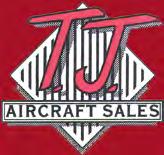

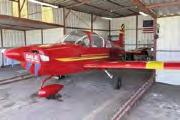



IV-PT A STEAL at 69.9K! Great performing 160 HP airplane with 884 lbs of useful load. Sharp interior and sporty exterior.
INCREDIBLE PERFORMANCE! Super fast. Super high-flying in pressurized turbineengine comfort with 750 horses. What happens when you buy a jet? You have to sell your turbo-prop. Even a gorgeous one like this.
1,000 nm range, go from sea level to 15,000 feet in 15 minutes, land in a 25 kt crosswind. Enjoy the feel and comfort of a fine European sports car, two entry doors, fabulous visibility and superior cockpit ergonomics.
A breath-taking total restoration of a classic WWII era primary trainer. Fly solo from the front seat. An absolute hoot to fly. Comes with a spare overhauled pickled engine. Add $2,500 to price with electric start.
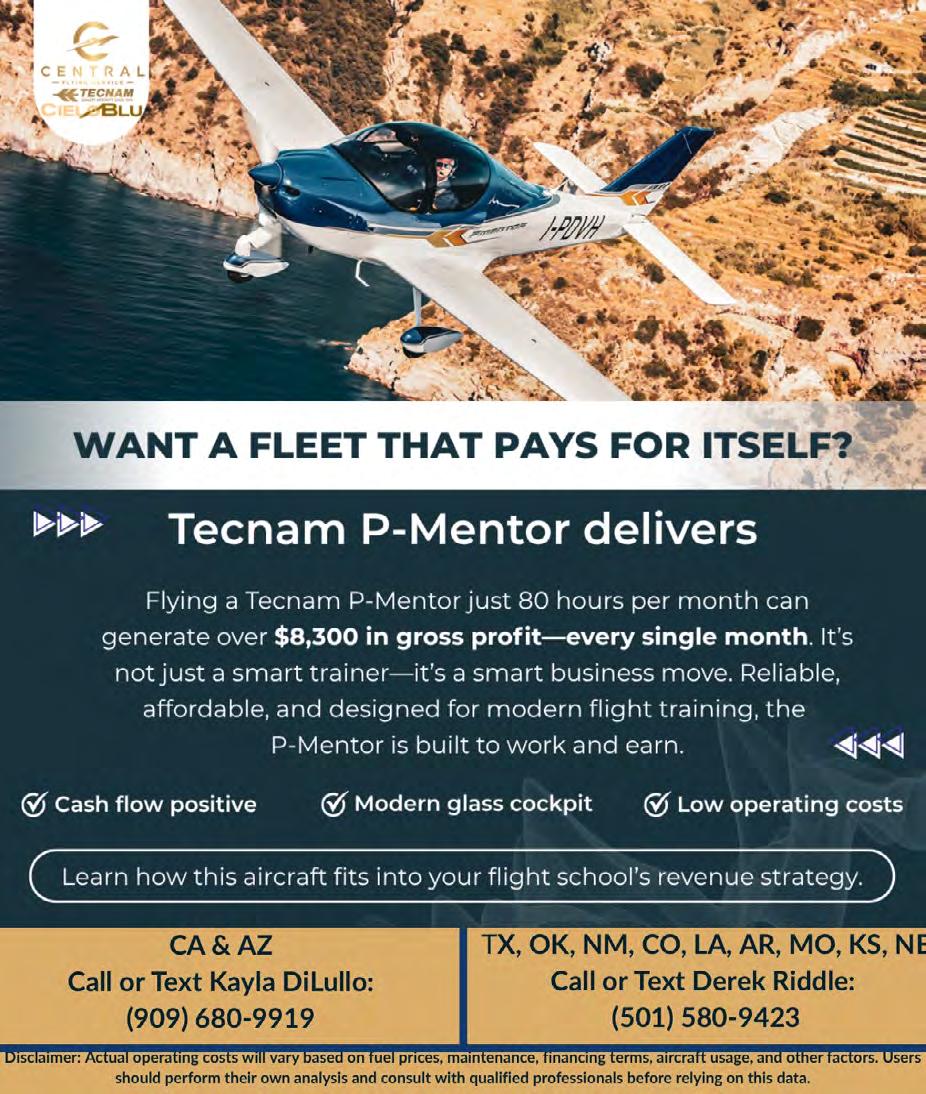

By Ed Wischmeyer
Don Watson, from Oz (down under, that one) has designed, built and flown a two-seat parasol monoplane. At the front of the plane, he has sharks’ teeth, but they are polished aluminum, just like the rest of the plane. That got me to thinking – so many homebuilts have sharks’ teeth painted on, as if the plane was fierce. Suppose the painting was a little more realistic, and the sharks’ teeth had braces?
* * * * *
That got me to thinking. Again. Simply designing an airplane and getting it into the air is a major accomplishment. Drawing up plans and selling those is another major achievement, even without considering all the tech support builders will want – probably for free. But designing a plane and getting it to fly just right is an even bigger challenge.
Back when I was an active aviation journalist, I got to fly a lot of different planes. One was a Russian six-seater with very heavy ailerons, and spoilers to assist in roll control. It wasn’t until I was taking pictures after the flight that I realized that the spoilers and ailerons were hooked up opposite to each other.
There are a number of planes that are on my do not fly list, primarily because of handling characteristics. Off hand, I can think of one otherwise popular series of all metal two-seaters, and a rare all metal two-seater. And any number of two- and four-seat composite airplanes, some of which have sold in the hundreds.
A kit for one of those planes was recently advertised on Facebook for $8,000, a substantial reduction in the original price. I was in contact with one prospective buyer who looking for comments on the internet before he bought it. He had tracked that kit through previous owners, and it last sold for $5,000. Interesting. After our conversations, he decided not to buy it. Good for him!
* * * * *
At the other end of the engineering spectrum is Van’s Aircraft. When the RV-14 was first flown, they weren’t happy with the pitch control, and they fussed with it for quite a while until they were happy with it and marketed it. The RV-14’s success is well earned,
in my book.
Now comes the RV-15 high-wing airplane. Their first version was not even a prototype, but an engineering proof of concept to see what there was to learn. Now they’re working on a kit prototype, with all kinds of details like ease of building and weight reduction, details far beyond just getting your own design into the air.
And if Van’s, with all their talent and resources, can learn so much from a first iteration, what chance do mere mortals have of getting a first design just right?
Personally, I’d love to have a tricycle gear RV-15A, which is still several years down the road – probably. However, given my age and health challenges, I’m wondering if this year will be my last Oshkosh. Or if last year was.
I’m still waiting for the FAA to come through with my Special Issuance Third Class after my little baby heart attack, and I’m not sure if I would want to take the airlines to Oshkosh if I can’t take the RV-9A. And I still need to build up my endurance for walking around at the show, a project which takes me to the fitness center five times per week.
And the big question, when do I sell the Garmin IFR RV-9A. It’s insured for a lot, but with $60,000 worth of avionics… plus oxygen, life vests, spares, etc. It’s a sweet ride.
* * * * *
I just bought an Insta360 X5 camera in the hopes that it will capture the instrument panel and the outside view both. That plus the GoPro should do what I want, hopefully. Here’s my idea for synching the two cameras – each of them will get the same audio feed from the intercom. The idea is that synching the videos isn’t the hard part, it’s getting the sound right across multiple cameras. We will see.
Now I have to figure out how to mount it in the cockpit…
* * * * *
Timber Tiger Aircraft makes the replica Ryan PT Trainer, and their prototype is gorgeous in polished aluminum. Now there’s a stablemate, called Kay’s Speedster.
The Speedster is two seats sideby-side, a taildragger with huge wheel pants, and a steeply sloped windshield. It looks fabulous, like it just flew out of the 1930s, with a Verner, not Warner, radial engine up front. (Verner
engines are manufactured in Czechia, not Chechnya. Czechia was formerly known as the Czech Republic).
However, I’m reminded of the 10 hours I had in an open cockpit Great Lakes biplane. The coolest part of the open cockpit was taxiing around the airport and everybody going oh, wow, look at that.
And there’s also the question of getting out of the airplane in case it noses
over. However, my tricycle gear RV-9A can do the same thing on a soft field, as in, after a forced landing.
All this is hypothetical until I get my medical back… When I sent in the paperwork, the expectation from various sources was that I’d get my medical back between June and December. But even with the medical, my body has too many parts at TBO for me to undertake a project like that.
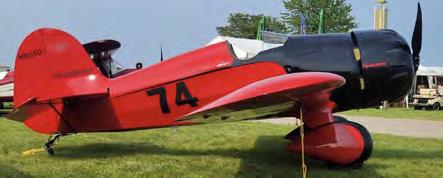





Continued from Page 19
has not been subject to ‘peer review’ because GAMI declines to share information without a confidentiality agreement,” Chatterjee wrote in his 19-page decision. “While that might be GAMI’s rational business choice, that decision has inhibited the formation of a general industry consensus by, among other things, preventing industry stakeholders from adequately vetting the fuel. These factors, in light of the concerns raised regarding the safety and compatibility of G100UL, such as whether it degrades tank sealant, further militate against finding that the fuel is commercially available.”
Chatterjee wrote that the CEH definition of “commercially available” is
“too narrow,” and disregards the express disapproval of G100UL by various aircraft and engine makers, based on insufficient available information to evaluate the safety and compatibility of the fuel. NATA (formerly the National Air Transportation Association), which represents FBOs, and the General Aviation Manufacturers Association both told the court that G100UL has not been subject to a consensus review process.
“It is not reasonable that the parties intended to preclude the operations of certain aircraft in California. That was not the purpose of the Consent Judgment. The Court interprets the phrase ‘approved for aviation use’ to mean that the fuel is approved by the FAA for general aviation use by all aircraft types in the general aviation fleet,” Chatterjee
wrote.
The FAA Piston Aviation Fuels Initiative and the FAA and industry Eliminate Aviation Gasoline Lead Emissions coalition (of which AOPA is a founding member) both seek to develop an unleaded fuel suitable for all aircraft in the GA fleet, though neither has approved G100UL for the same reasons cited by aircraft and engine manufacturers and industry advocates, the judge noted, leaving the door open for CEH to raise the issue again in the future as “science and industry advance.”
“CEH points out the significant health hazards connected with leaded Avgas, which is undisputed and disturbing. Removing leaded Avgas from California would undoubtedly benefit the public health. But using this Prop
65 Consent Judgment to impose that change on this record poses significant consequences that also affect the public’s health and safety as well as the operations of the entire general aviation industry and social and economic sectors that depend on that industry,” Chatterjee wrote. “The Legislature and regulatory and industry bodies are addressing the issue.”
Learn more at AOPA’s website, aopa.org. See the 22-page Superior Court of California, County of Alameda ruling at https://download.aopa. org/advocacy/2025/May30_Ruling_ Center_for_Environmental_Health_v_ Aerodynamic.pdf.
By Lea Buonocore
World Beneath My Wings: Flying Adventures During a Life of Flight Testing and Aircraft Delivery Around the World , written by Peter Fraser, published by RedSky Publishing in 2024, is an intriguing and educational series of stories about the author’s brave and fascinating journeys through the skies as he flies. Fraser shares thrilling and adventurous stories of aviation, which allow the reader to experience first-hand his experiences of exploring the world above and below the clouds. Fraser discusses his gripping experiences of flight testing and international deliveries.
Fraser was born in Africa and for many years he delivered and tested aircraft all over the world. Fraser has many hobbies aside from flying, including skydiving, paragliding, and sailing. He also loves spending time in the great outdoors and traveling, all of which add even more amazement to his air travels and experiences.
Personally, I enjoyed this novel not only for Fraser’s engaging stories but because it is very informative.
I feel that people who may not know a lot about aviation can still benefit from reading this book because the author provides foundational knowledge about aviation. For example, the very beginning of the book provides key terms and abbreviations for concepts discussed in the book. This can serve as a good learning tool for someone, like myself, who is only beginning to better understand the world of aviation.

My favorite story in this book was the first story titled, “Crashing,” in which Fraser talks about a journey he took in the North Atlantic. I loved how he described the weather in detail, saying it was dark, cold, and soggy. The imagery Fraser uses prepares the reader for an intriguing journey that makes you want to keep reading. From a literary perspective, dark and cold weather typically sym -
bolizes that something unfortunate is about to happen and with the title being, “Crashing,” all you can do is prepare for an epic story of survival. During this story Fraser was on his way to Prestwick, Scotland. During the trip he experiences quite a few mechanical and technical problems. He was also flying a Swearingen Metroliner, for the first time, which can be a challenge in and of itself. Combined with facing severe weather and technical issues, the reader can foreshadow the challenges that are to come for Fraser.
Noting that Fraser was on this journey during a major snowstorm, it also turned out that the main runway was out of commission, so he needed to land on a much shorter runway. The runway is covered in snow and the brakes are not working properly,
so as a reader we can confidently say that we are now sweating or possibly shivering from just reading about this. To make matters worse, Fraser is completely alone and trying to land a clunky aircraft on a snow covered slippery runway, which makes the fear all the more real. Not only can you picture the situation, you can feel the pressure and anxiety. Through vivid description and imagery, Fraser explains how hard it was to see during the terrible weather event. Not to oversimplify it, but similar to The Little Engine That Could , Fraser tells himself, “You’re good, you’ve got this,” as he struggles to navigate this harrowing and frightening situation. Unfortunately, he inevitably crashes and can hear the loud thud as he bounces right off the runway. Reading this part of the story made me feel as if I was in the front row of an action thriller movie. Fraser’s vivid descriptions made me feel as if I was the one trying to land a clumsy aircraft on a snow-covered runway in the middle of the dark night.
Fraser also does a good job discussing the aftermath of the crash.
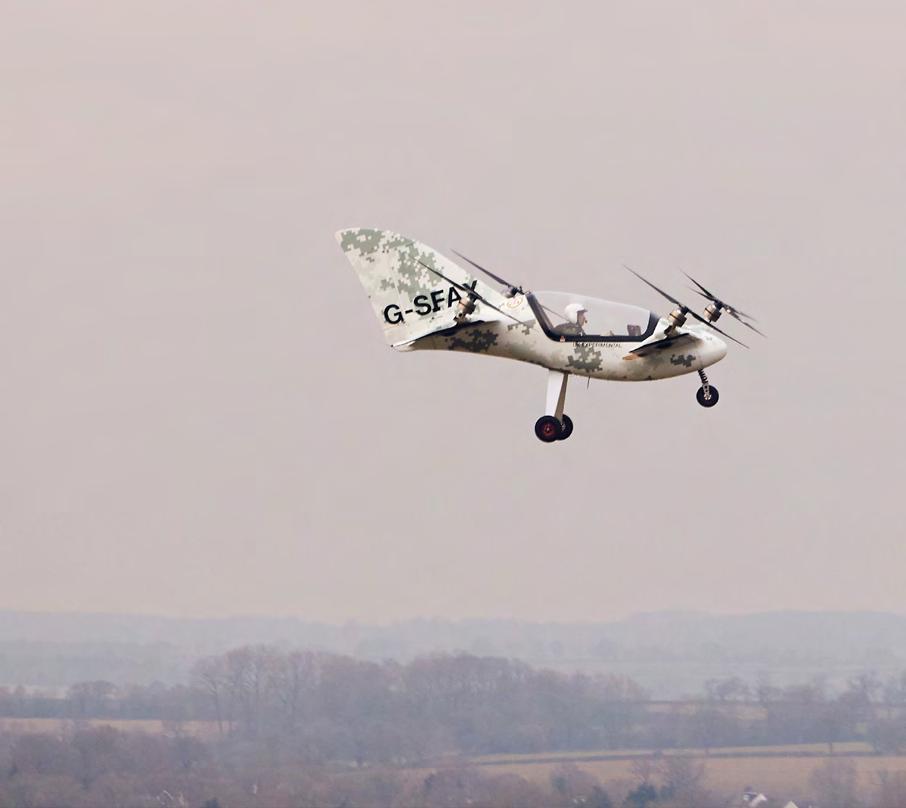
Skyfly’s Axe is a VCA (vertically capable aircraft) , able to take off and land vertically or depart conventionally using less than a 100ft. takeoff roll. Battery powered, it efficiently cruises like a fixed wing giving it extended range. It’s canard wing design gives it an extraordinary ability to glide while the ballistic recovery system adds an additional measure of safety.

Features include:
• Fully electric propulsion with zero CO2 emissions in flight
• Whisper quiet take-off and landing (Inaudible from 2000ft)
• Fully Electric a range of 100 miles (300+ miles with a hybrid option).
• Fully redundant propulsion and flight control system with mechanical aerodynamic surfaces
Pre-order now at:
www.skyfly.aero/order
Phone: +1 (615) 979-5559

One of the truly great things about being an aviation buff is the number of “Goodies and Gadgets” available to play with. Here In Flight USA has collected a few new ones worthy of your consideration.
Aircraft Spruce & Specialty Co. has been the supplier that aircraft builders, owners, pilots, and aviation businesses have depended on since 1965. They carry a wide selection of aircraft parts, building materials, avionics, and pilot supplies, all of which are offered on their website (www.aircraftspruce.com) and in the famous Aircraft Spruce catalog, now over 1,000-pages available for download or for free in print. You can depend on Aircraft Spruce for prompt shipping and competitive pricing on all orders.
Find the Aircraft Spruce Team at AirVenture
Aircraft Spruce will be at EAA AirVenture in Oshkosh, Wisconsin, July 21 through 27, 2025. Visit their booth, Hangar A, 1022-1029 to get great discounts and meet their customer friendly Aircraft Spruce team. Orders of $50 or more placed in advance and online can be picked up at the show. When ordering, select show pickup in the shopping cart and then collect your order at the Aircraft Spruce booth. Certain restrictions apply and items are subject to availability.
Meanwhile, check out some of the latest and greatest items featured by Aircraft Spruce.
The Switchbox Generator
This unit allows for the easiest and safest way to remote control any electrical device, now with battery powered AC Outlets! An immense 1800W output, 1024Wh capacity and cellular control for making remote operation off-the-grid easy.

For Pilots: No more driving to the airport hours before a flight and running a forced air system. Turn on your engine heater from your cellphone, and simplify your cold flying routine! Scheduling ability to turn on remotely at 3 a.m., heat up for 4-5 hours and be ready for the early morning flight with high oil and CHT temps.
Can be used with or without cellular, and comes with a free app to control on WI-FI.
Sidekick Battery accessory available to increase the capacity and heating time 3x, up to 10 hours with standard oil sump heater.
The unit weighs 27 pounds and measures 8 inches by 11 inches by 12 inches.
The base systems sells for $999.00 and the full system with expansion battery pack sells for $1,499.00. The Switchbox Control operates within the United States and Canada.
All Courses, One Price:Gain unlimited access to every course, lesson, and quiz in the Ground School app with a single subscription. No hidden fees — just complete, all-in-one training for one simple price. Includes complete private pilots course, complete instrument rating course and courses on mastering landing and standard operating procedures.
You Pass or TFP Pays: TFP is so confident in their training and the results show: 99 percent of their students pass on their first attempt. If you complete their courses and don’t pass your FAA written exams, they will refund your subscription and pay for your re-test.

Written Prep, Oral Prep, and Checkride Prep: Master every stage of your pilot journey with comprehensive training for your FAA written exam, oral exam, and checkride — all in one app (and for one price).
Designed to Make You Safer: From detailed video lessons to real-world scenarios and expert tips, the Ground School app is built to improve your skills and enhance your safety as a pilot. Plus, with the power of Knowledge RecallTM, our proprietary spaced repetition algorithm, we can ensure your knowledge is always checkride ready.
Unlimited Practice Tests: Test your knowledge as often as you need with unlimited practice exams, featuring real FAA-style questions. Our team of expert CFIs adds in-depth “Learn More” details to every question, providing clear explanations and deeper insights to help you truly master the material (not just memorize it).
Reference Library: Access a complete library of FAA documents, books, guides, and essential reference materials—always up-to-date and ready when you need them. Plus, we deep link directly from our lessons and answer explana-
tions straight to the source material, making it easy to find information instantly.

Meet Jason of The Finer Points/The TFP Ground School Flight Training App
Jason is a CFII with more than 20 years of aviation experience and nearly 10,000 hours of dual instruction given. Jason is a member of the FAA safety team, a former instructor for AOPA’s Air Safety Institute and was named by the FAA as the western pacific CFI of the year for 2009. Using his background as a performer and experience on the flight line, Jason created “The Finer Points,” one of the most recognized and well respected aviation podcasts and YouTube channels in the world.
The TFP Ground School Flight Training App sells for $299 for an annual subscription or $49 for a monthly subscription. The subscription app can be purchased from Aircraft Spruce’s website, aircraftspruce.com, and is sent the buyers by email.
The Claw Aircraft Tie Down
The Claw holds more than any other portable system on the market. Advanced Aircraft Anchoring System – The Claw Aircraft Tiedown kit comes complete with three earth anchors, rope, spikes, hammer and canvas carry bag. The harder you pull, the more it grips the Earth.
The Claw features:
• Easy installation and easy removal. No more struggling with screw-in anchors
• The Claw is designed exclusively for aircraft
• The Claw system has a 3,600-pound combined capacity

• The last tie down you will ever have to buy - Lifetime Warranty
The Claw kit includes the canvas bag that is easy to carry and store. It contains three anchors, nine spikes, one hammer, and a 25-foot rope. Each kit sells for $133.75.
Skywash Drywash With Paint Protection – Silicone Free
SKY-SE1 Drywash with Paint Protection is for aircraft exterior cleaning. It is a high-quality waterless cleaner with protective finish. SKY-SE1 cleans and leaves a high-gloss, protected, surface shine. Reduces maintenance time and produces no contaminated water runoff. A solution that preserves paint-life, protects against corrosion and leaves the aircraft surface in aerodynamically clean condition.
Safe and Certified: SKY-SE1 Professional Drywash with High Quality Gloss and Protective Finish is a nonhazmat unique liquid one-process drywash cleaning solution especially formulated for use on exterior aircraft surfaces. SKY-SE1 Drywash with paint protection is a waterless cleaning method that is safe to use in the same area where maintenance can be done at the same time, reducing maintenance downtime and turnaround time. Aircraft cleaning – without water – and odorless. This product is made in the USA.

Skywash Drywash is sold in 16-ounce containers for $12.95 each; one gallon containers for $72.75 each; and five-gallon containers for $292.95 each.
Look for Aircraft Spruce at the following events:
• July 21-27, 2025 – EAA AirVenture, Oshkosh, WI, Hangar A, Booths 10221029.
• Sept. 30 - Oct. 2 – Regional Air Cargo Carriers Association Show, Scottsdale, AZ.
• Oct. 14-16 – National Business Aviation Association (NBAA) Convention, Las Vegas, NV.
• Nov. 17-20 – NAAA AG Aviation Expo, Reno, NV.

1. ________ High Oxygen
6. Comes before Cielo Blu
10. You need to know the ___ and outs of flying
11. About (abbr)
12. ________ Aircraft Sales
15. Unit of meas.
17. Horizontal ____
19. UFO pilot
21. Account of, for short
22. Back orders, shortened
23. To-do and grocery
24. TJ Aircraft _____
27. _____ Plantation
28. What awry and wrangler have in common
29. Short for Northern Territory
30. Exists
31. Aircraft follower
33. Precedes about or get
35. Ids; self-images
36. Common link between denies and genius
37. What's cool.. for now
38. ___ Watches
40. That guy
41. Bruce's ______ Covers
45. Follows em
46. Pacific Coast ________
49. Ditty, for one
50. Public Service Announcement, for short
51. The two of us
52. I see..
53. Comes before IOU
54. Doctor of Science, shortened
55. Cut, as the engine
56. Born __ ___ Consulting
57. X minus VIII
58. _____ Aviation Oxygen
62. No charge, for short
63. Finish
64. My ____ are sealed
67. Oakland Aviation ______
69. _______ Aviation Insurance
70. Short for salvage loss
71. Certain key feature
72. Utterance of hesitation
73. Pacific ___ Cooler
76. Schweiss _____
79. Petaluma follower
81. What aerial and 5 down have in common
82. USA Aircraft _______
84. “The Future in Flight Podcast”
87. The Good '___ Days
88. ___ Stream Products
89. They feature Skyfly's Axe down
1. ____ _____ Aviation
2. Atop
3. Airplanes ___ Aircraft Sales
4. ________ Coast Avionics
5. Particular prefix for aircraft
6. Anxious; on edge
7. The _______ Freedom Center
8. They repair fuel cells
9. Matching _____
13. ___ SkyShare
14. Particular pilot benefits gp.
16. Variety of color; hue
18. Cool ___ a cucumber
20. Tantalum symbol
25. Reduce
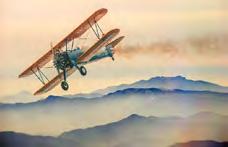
46. Symbol for arsenic
47. Fold-up bed
48. Airport ______
50. Flying objects
26. Initials for Aviation Business Consultants
28. _________ Aviation
32. They have parts for classic Taylorcraft
33. “Fueling the Future of General Aviation”
34. Paid notice
35. Flightless bird
37. The _____ Points
39. QREF follower
40. ___ do you do?
42. R & M _____
43. Certain wkdy.
44. Pilot _______ Solutions

53. Short for agriculture
59. Scholastic website ending
60. ___ Aviation
61. ______ Airport
63. Einsteinium symbol
65. Not at lunch
66. Ave. cousin
68. Precedes form or cycle
69. Certain wildlife enclosure
70. Sibilant sound from the librarian
71. Short for Fire Department
72. Initials for a ship
73. Shaped like an egg
74. Lion's den
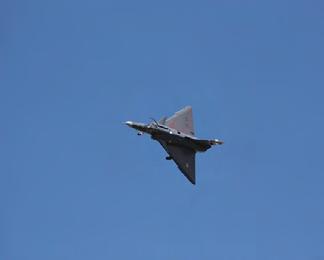
75. Arcadia ____
77. Train syst.
78. Long, upholstered couch
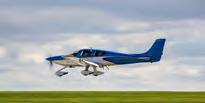
79. ____ Botta
80. Accounts Receivable, shortened
81. Associate of Arts, for short
83. Take to the sky
85. Orange juice, on a written order
86. Old English, shortened
86. SW opposite
87. All right (abbr)
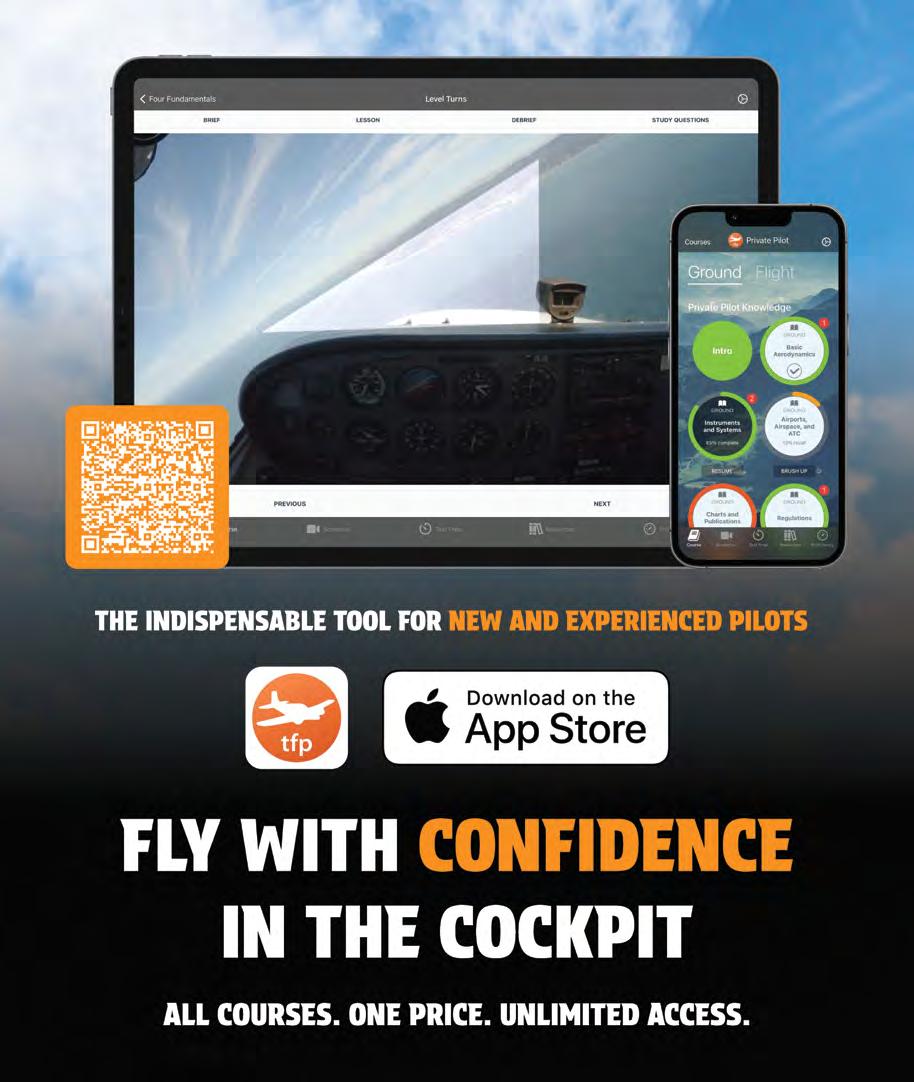
The Homebuilts area will continue to be one of the main attractions at EAA AirVenture Oshkosh 2025, July 21-27 at Wittman Regional Airport in Oshkosh as more than 1,000 homebuilt aircraft are expected to dot the flightline in various shapes, sizes, and designs.
Two homebuilt aircraft anniversaries will highlight the area. The Van’s RV-8 will celebrate 30 years of flight. The pop-
ular homebuilt is the fastest of the RV aircraft line with a top speed of approximately 220 miles per hour. In addition, the iconic Rutan VariEze turns 50 years old. The VariEze was the first of Burt Rutan’s designs to gain widespread popularity amongst homebuilders.
Several daily workshops and forums will be on offer throughout the week of AirVenture. Daily workshops give attend-
ees a taste of aircraft building, including sheet metal construction, fabric covering, composites and TIG and gas welding. Hundreds of forums are also scheduled featuring a variety of presenters sharing their knowledge about building, maintaining, repairing, and restoring aircraft.
Homebuilts in Review continues in 2025, spotlighting interesting homebuilt aircraft and their designers or builders.
The presentation series is held twice per day at 10 a.m. and 1 p.m. and is located just east of the Aeroplane Workshop and just west of Homebuilders Headquarters.
See the schedule of daily workshops and forums at https://www.eaa.org/airventure/features-and-attractions/workshops-and-presentations and for general information, visit eaa.org/airventure.
The U.S. Air National Guard will be the featured service component at EAA AirVenture Oshkosh 2025, which is scheduled for July 21-27, 2025, at Wittman Regional Airport in Oshkosh, Wisconsin.
“Each year, EAA selects an aviation military command to recognize during AirVenture Oshkosh,” said Rick Larsen, EAA’s vice president of communities and member programs, who coordinates AirVenture features and attractions. “The Air National Guard is an important part of the country’s capabilities in every state and maintains impressive levels of expertise and experience within the entire spectrum of military aircraft.”
The ANG is the primary combat-ready reserve to the U.S. Air Force with more than 108,000 airmen and 1,000 aircraft. Every day, the ANG provides a flexible, dynamic, fight-tonight force to defend the homeland, establish deterrence, serve our communities, and project global air power.
“Participating in the nation’s largest air show is a tremendous opportunity for our Guard airmen to showcase the skill, precision, and capability of the Air National Guard,” said U.S Air Force Maj. Gen. Duke Pirak, acting director, Air National Guard. “Our Guard airmen combine military training with civilian skills and experiences, bringing a broad knowledge base and innovative mindset to the warrior ethos. It’s an honor to represent the U.S. Air Force and highlight the important missions we execute every day at home and abroad.”
Today’s ANG executes more than 30 percent of the USAF’s global operational airpower requirements and more than 94 percent of the USAF’s homeland defense responsibilities.
“Every opportunity to plan, deploy, and execute, even in a public setting like an air show, sharpens our readiness for real-world operations,” said Pirak. “These events allow our Guard airmen to prac-
tice critical mission sets, refine coordination across units, and operate in dynamic environments, directly contributing to our ability to respond decisively in times of crisis or conflict.”
National Guard units from at least seven states are scheduled to participate at Oshkosh with either flying demonstrations or aircraft displays. Final announcements on participating aircraft and personnel, including flight demos and presentations by ANG units throughout the week, will be announced as they are finalized.
“This air show is more than a public event — it’s a powerful demonstration of the Air National Guard’s unrivaled airpower and the professionalism of the men and women who deliver it every day,” said Pirak. “Our participation highlights the wartime readiness of our units, reinforces our commitment to allies and partners, and sends a clear message to potential adversaries: we are ready, ca-
pable, and committed to defending our nation’s interests wherever they may be challenged.”
Learn more at EAA AirVenture, eaa. org/airventure.
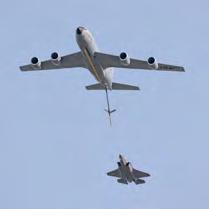
The U.S. Air National Guard will be the featured service component at EAA AirVenture Oshkosh 2025.
(Photo courtesy EAA AirVenture)
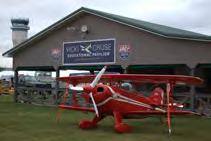
IAC will host a variety of activities during EAA AirVenture Oshkosh 2025, July 21-27.
The International Aerobatic Club (IAC) will host a variety of activities during EAA AirVenture Oshkosh 2025, open for everyone’s enjoyment. Attendees don’t need to be aerobatic pilots to participate in the events.
Aerobatic legend Rob Holland’s life will be celebrated with a special program during the July 21 afternoon air show, and his trophies will be displayed throughout the week in the IAC building.
The IAC is also celebrating the 80th anniversary of the Pitts Special. During AirVenture, numerous forums will be
held featuring some of the most legendary and influential Pitts pilots from around the world. Those flying in with their Pitts Specials are encouraged to display them outside the IAC Aerobatic Center.
Attendees will also have the chance to meet some of the skilled air show pilots performing throughout the week, including National Aviation Hall of Famer and former EAA Young Eagles Chairman Sean D. Tucker, the NextGen Eagles, and more. This will be an up-close opportunity to ask pilots anything related to aerobatics, including their experiences, train-
ing, and tips for aspiring aviators.
The IAC will also host its annual membership meeting on Friday, July 25, at 8:30 a.m. The same day, the IAC member gathering and dinner will be held at the EAA Nature Center from 6-8 p.m. Educational seminars will also be held at the IAC Vicki Cruse Educational Center Pavilion, starting on Tuesday, July 22, and running through Friday, July 25, at 8:30 a.m. See the full schedule of events on the IAC website, iac.org. General information about AirVenture can be found at eaa.org/airventure.
EAA AirVenture Oshkosh 2025 will pay homage to the earliest days of powered flight with a trio of replica aircraft from the pioneer era of aviation that will be displayed in the Vintage area of the AirVenture grounds. The pioneer era of aviation is recognized as the period between the Wright brothers’ first flight in December 1903 and the start of World War I in August 1914. The 72nd edition of EAA’s fly-in convention is July 21-27 at Wittman Regional Airport in Oshkosh.
“The pioneer era of aviation laid the framework for the entire industry through experimental designs and the willingness to push the boundaries of current technology,” said Rick Larsen, EAA’s vice president of communities and member programs, who coordinates AirVenture features and attrac-
tions. “The three airplanes on display at AirVenture will serve as our tribute to the people who paved the way for the aviation industry.”
A replica Santos-Dumont Demoiselle, built by Club Aéro des Garrigues in France, will be transported overseas to Oshkosh to be displayed in the Vintage aircraft area. The Demoiselle is a lightweight monoplane designed by Alberto Santos-Dumont and features a fuselage built from bamboo. The first Demoiselle was built in 1907 and weighed less than 300 pounds.
A replica Bleriot XI from EAA’s collection will join the Demoiselle on display. The Bleriot XI was created by French businessman Louis Bleriot who famously flew over the English Channel in July 1909. The flight helped grow the popularity of the Bleriot XI with de-
mand quickly exceeding the capacity of the original French factory. EAA’s flyable replica is built around an original Anzani engine.
The third airplane to be displayed is a Morane-Saulnier Type L replica, also part of EAA’s collection. The Type L was one of the first fighter aircraft from World War I. Fitted with a machine gun that fired through the propeller arc, the Type L became the first type to shoot down an enemy aircraft through the propeller. EAA’s replica was built by a team of volunteers, which included former Morane-Saulnier employees. The aircraft was donated to EAA by the Morane-Saulnier Heritage Association following an appearance at EAA AirVenture Oshkosh 2017.
Both the Bleriot XI and Mo-

A replica Santos-Dumont Demoiselle, built by Club Aéro des Garrigues in France, will be on display at AirVenture July 21-27. (Photo courtesy EAA AirVenture)
Attendees of EAA AirVenture Oshkosh 2025 are invited to a powerful week of evening programming at the Theater in the Woods. From Sunday, July 20, to Saturday, July 26, a series of nightly events will gather on stage everyone from NASA astronauts to those involved with World War II and the Korean War and more.

AirVenture’s Theater in the Woods programs will include speakers and presenters from NASA astronauts to those involved with World War II and the Korean War and more. (Photo courtesy EAA AirVenture)
“After a full day on the Oshkosh flightline, evenings at Theater in the Woods have for more than 40 years been the place to hear from aviation legends and today’s innovators,” said Rick Larsen, EAA’s vice president of communities and member programs, who coordinates AirVenture features and attractions. “This year’s programming again creates ‘only at Oshkosh’ moments with those involved in aviation history, cutting-edge technology, or the future of flight.”
Schedule of Events:
Sunday, July 20 - An Evening With Champions (7-9 p.m.)
Kick off the week with inspirational stories from aviation’s best. Hear firsthand accounts from those who have been through all the advances in the aviation industry.
Monday, July 21 – World War II: The Stories That Made Us (7-9 p.m.)
An evening of families and historians working to tell the stories of those
who made aviation history during that conflict. A touching evening to those who shaped our skies.
Tuesday, July 22 - NASA Moon to Mars: Artemis II and III (7-9 p.m.)
The stage will be full of the NASA team, leading the way back to the moon and beyond. Do not miss this chance to hear from the engineers, mission control flight directors, and astronauts themselves.
Wednesday, July 23 - Rescue Me! (6:30-7:45 p.m.)
Celebrate the history and future of the brave women who undertake lifesaving missions in the air.
Thursday, July 24 - M*A*S*H: Healing the Wounds With Laughter (7-9 p.m.)
The MASH units in Korea saved countless lives and later had their legacies preserved by a hit TV show. Celebrate both and honor those who were a
rane-Saulnier Type L replicas are currently on display in the Pioneers of Flight exhibit of the EAA Aviation Museum. Learn more at eaa.org/airventure. part of each.
Friday, July 25 - The Fight to Save the City of Angels (7-9 p.m.) Honoring those who fought the fires in the Los Angeles area. When this historic natural disaster hit Los Angeles, brave pilots and firefighters worked hard to save lives and gave an entire city hope.
Saturday, July 26 - High Flight and Higher Callings: Serving as a Fighter Pilot in the Air National Guard (6:307:45 p.m.)
A story of dreams, service, and the relentless pursuit of purpose. USAF Major General Duke Pirak will be on stage to discuss his journey to flying and commanding our men and women of the USAF Air National Guard.
All evening programs at Theater in the Woods are supported by M&M’S and are included with regular AirVenture admission. Visit eaa.org/airventure for more information and schedules.
Community College of Beaver County (CCBC) has entered a nationwide memorandum of understanding with the AOPA Foundation to grant up to 10 credits to students who complete the 9th, 10th, and 11th grade AOPA Foundation High School Aviation STEM Curriculum. In a June 10 announcement, AOPA said the agreement allows high school students to jumpstart their college and professional careers within aviation.
“The AOPA Foundation is thrilled to have signed our first national agreement with CCBC. The agreement opens doors for students from more than 1,400 high schools nationwide to matriculate to CCBC or its satellite locations to become air traffic controllers or professional pilots. The AOPA Foundation and CCBC share the vision of keeping the skies free and available to anyone who dreams of a career in aviation and aerospace, and this relationship is an example of how to turn that
vision into reality,” stated Dan Justman, Vice-President, You Can Fly, a STEM. org Accredited Educational Program.
“CCBC is excited to enter into this agreement to advance and support the Foundation’s goal of unlocking pathways to aviation careers for teens,” said Dr. John Higgs, dean of the James M. Johnson School of Aviation Sciences. “As a result, we are ensuring that high school students can economically leverage CCBC’s expertise in aviation education and accelerate towards successful careers as pilots, air traffic controllers, or other industry professionals.”
The Community College of Beaver County: James M. Johnson School of Aviations Science is based at the Beaver County Airport (BVI) in Beaver Falls, Penn. Learn more at https://www. ccbc.edu/schools/school-aviation
Learn more about AOPA and its STEM curriculum at aopa.org.
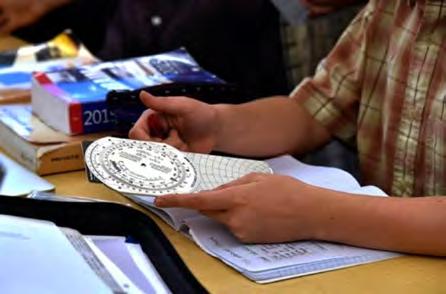
AOPA is impacting the next generation of pilots through high school programs. Now, taking it a step further, Community College of Beaver County (CCBC) has entered a nationwide memorandum of understanding with the AOPA Foundation to grant up to 10 credits to students who complete the 9th, 10th, and 11th grade AOPA Foundation High School Aviation STEM Curriculum. (Photo courtesy AOPA)
Many of our long-time readers know to look at In Flight USA’s ads and copy for parts, accessories, supplies, and technologies to improve your flying experience as a pilot. Sometimes we find cool items that can enhance the comfort and happiness of our passengers, whether we’re flying them on big airliners or small training aircraft. While it is recommended that pilots wear sturdy shoes while flying, some passengers can better enjoy their experience in the air with a pair of comfortable slippers. CP Slippers can make flying and travel a great experience for passengers from all walks of life.
CP Slippers is a European clothing company that specializes in casual footwear for walking around home or other leisure activities such as travel. Last month, the team was kind enough to mail a pair to the team at In Flight USA The manufacturer has seen many passengers wearing CP Slippers on long commercial flights and would love to improve the experience for passengers
of smaller aircraft, including charters or those flying on privately owned jets and planes.
CP Slippers are lightweight, come in sizes XS-XXL, and come in an assortment of colors. The writer of this review recently started wearing a navy blue pair and has found them very comfortable to easy for walking. They’re relaxing and very stylish for footwear that is meant to be worn at home.
As we often hear from our pilot readers, the smallest amount of discomfort in flight can wear on you and make the experience an awful one. This is absolutely true for frequent travelers and passengers in planes of all sizes. So, for your next trip, whether its on an airliner or in your own airplane (with somebody else at the controls), consider ordering a pair of CP Slippers at: https:// www.cpslippers.com. There is a pair for every pair of feet desiring comfort at home, in the home office, or while traveling any which way.

CP Slippers are lightweight, come in sizes XS-XXL, and come in an assortment of colors. They are perfect for comfort wear on planes or other modes of passenger transportation or for comfort about the house. (Photo courtesy CP Slippers)
Continued from Page 26
He
seasoned pilots not to
become complacent. Understanding that crashing is an experience some pilots experience is important to understand and can help pilots know that even if they do crash, or find themselves in that eminent predicament, they can do everything they’ve
learned and know to make it survivable.
Another intriguing story was number five, “Ditching.” This story shares an experience that Fraser had while embarking on a journey between California and Hawaii. He was flying a beautiful Cessna 206




HMEWatch is offering excellent prices on their long established Professional Flight Watch line.
They are offering an excellent clearance sale to make room on new models coming out later this year. Take advantage of these high-quality models while they last at really great pricing.
There are a number of different models and colors offering both, Metal Bracelet models starting at a low $139.95, as well as high-quality Rubber/Neoprene bands at only $119.95.
The ATP model is an all digital multi-function watch offering multiple alarms, stopwatch, as well as countdown time, multiple city “World-Time” covering every time zone on the planet, and a thermometer, as well as an altimeter/barometer. These popular full-featured models are newly priced, starting at $74.95!
There are four versions of the “ATP,” a larger all black plastic with either a regular LCD display or a reverse LCD display; the other, slightly smaller, offers a metal case and yellow rubber strap.
The HMEWatch A.T.C. (Aviator Timepiece-Chrono) Aviator watch is an all analog, high-quality aviator watch offered in multiple styles. This model features a 60- minute chronograph, date window and a second-hour indicator to show a constant display of a second time zone whether it be your home, destination or as most use it, G.M.T./Zulu Time. This second large hand is a 12hour hand teaming up with a 24-hour Subdial indicator.
There is also a simple, optional instant-reset for the Chrono, where an instant push of the lower right mode button resets the chrono; no more having to stop the chrono before resetting it if that is your wish. In addition, there is also a functional E6B calculator Bezel on each model.
The A.T.C. comes in either all-stainless with a stainless steel bracelet or a stainless steel body with a polyurethane strap. HME Watch offers all models, including the P.U. strap model with a deploy clasp instead of the lower price “Tang-Buckle” found on most watches. In keeping up with styles today, this is a fairly large watch, at 43mm diameter by 13mm thick. Weight is about normal for a stainless steel model.
Take advantage of these special prices while stock lasts. Also, they are offering prices well under retail on Citizen Eco-Drive Pilot watch models.
Contact HME at 323-464-6660 or go to www.hmewatch.com to




and had been flying for many hours throughout the night. Unfortunately, Fraser’s good friend Toby was having a problem getting fuel to the engine. Fraser discusses the challenges of trying to find solutions and not being able to come up with a workable plan. Whether or not you are an aviation enthusiast, this is a highly-relatable experience, in terms of working through a challenge and facing fear and frustration, that we have all been through at one point or another.
The only viable plan Fraser and his fellow pilots could come up with was to “ditch.” Ditching is a plan that may be viable during the day, but at night would be very hard to survive. Through hearing this experience, the reader is intrigued and wants to know how they are going to come to a safe and survivable solution. Everyone wants a happy ending, right? Luckily, the C-130 Coast Guard search and rescue aircraft is being dispatched! Thankfully Fraser and Toby now have some sort of support to hopefully get them back to safety… urging the reader to turn the page.
Once again this story was quite thrilling, as it made me want to continue to keep reading to see how things would turn out. I like the part about Toby being in trouble, as it was a relatable human experience, and made me feel relieved that I am not the only one who gets into trouble sometimes.
Overall, I would highly recommend checking out Fraser’s book. I know you will find these stories thrilling, intriguing, and often relatable. The book can be enjoyed by older children, young adults and adults. Fraser’s strong imagery allows the reader to feel as if they are experiencing the stories right along with the author. Common human experiences make the novel relatable and unforgettable.
Find World Beneath My Wings: Flying Adventures During a Life of Flight Testing and Aircraft Delivery Around the World on Amazon, 382-pages, paperback, RedSky Publishing LLC.
uAvionix on June 3, announced FAA approval of software version 3.0.1 for its flagship certified AV-30-C flight display, delivering a significant leap forward in features and functionality for both VFR and IFR pilots. This software update comes at no additional cost to existing users.
This software release is more than just an update; it’s an evolution of the AV-30-C, one of General Aviation’s most popular multifunction panel displays. Version 3.0.1 introduces a suite of enhancements including:
• Turn Coordinator (Bank Angle or Turn Rate)
• Rate of climb overlay (FT/NM)
• High/low voltage indication
• G-min and G-max tracking
• Vertical Speed indicator on Traffic Display
• FAA-approved AV-HSI integration with digital Nav and GPS
• FAA-approved AV-APA integration with STEC autopilots
“This release is a major software evolu-
tion that unlocks powerful new capabilities for AV-30-C users,” said John Chargo, Lead Product Owner for the AV-30 at uAvionix. “We’re continuing our mission to deliver accessible, advanced avionics that enhance safety and ease pilot workload.”
With AV-30-C now able to interface through AV-HSI PMA to IFR navigators, pilots gain horizontal and vertical guidance, heading bug synchronization, and GPS steering across up to four AV-30-C displays — features typically reserved for far more expensive and complex systems.
The AV-30-C just keeps getting better. Version 3.0.1 demonstrates uAvionix’s commitment to continuous improvement and listening to the needs of our fellow pilots. This update further adds value to the investment that so many pilots have already made.
• Seamless upgrade path for current owners using the AV-Link for wireless updates or the AV-HSI PMA Serial connection
• Connected cockpit experience with synchronized settings across AV30-C displays


• Enhanced situational awareness for safer, more confident flying
• Ideal for VFR and IFR pilots, flight schools, and retrofit installations
Upgrade availability: Software version 3.0.1 is available now at no cost from https://uavionix.com/support/av-30-c/. uAvionix, based in Bigfork, Montana, is a leading provider of advanced avionics
solutions that are lightweight, compact, and designed to meet the needs of crewed and uncrewed aviation across the globe. Committed to radically innovating to make airspace safe and accessible for all, uAvionix empowers aviators with the latest technology, systems, and data to achieve their mission in flight. Learn more at https://uavionix.com.




Continued from Page 14
of quantum navigation faces several challenges. Quantum sensors currently require precise environmental conditions, such as extreme cold and vibration-free platforms, typically achieved using laser cooling techniques and advanced isolation systems. Additionally, size, cost, and power consumption remain significant barriers. Quantum sensors require complex infrastructure, including specialized vacuum chambers and precise optical setups, to maintain quantum coherence.
Integrating quantum sensors into aircraft systems will necessitate significant redesign efforts. Avionics bays must
accommodate environmentally controlled housings capable of maintaining ultra-cold temperatures and isolating the sensors from mechanical vibrations. Advanced electronic interfaces will translate quantum measurements into usable navigation data, integrating seamlessly with existing avionics platforms such as flight management systems (FMS), autopilots, and flight control computers.
The regulatory aspect is another critical factor influencing quantum navigation’s adoption. The FAA mandate rigorous certification processes for navigation technologies. These standards necessitate comprehensive testing to confirm system reliability, redundancy, and operational safety. Quantum naviga-
tion’s inherent robustness and accuracy could streamline certification efforts, accelerating its transition from laboratory research to real-world applications.
For pilots and aircraft operators, quantum navigation represents a paradigm shift. The introduction of quantum sensors promises significantly improved situational awareness, reduced dependency on vulnerable GPS signals, and enhanced operational safety. Operators can anticipate navigating with greater confidence and precision, especially in regions traditionally challenging due to unreliable GPS signals.
Quantum navigation technology is at the forefront of a significant transformation in aviation safety and reliability.
While technical and regulatory challenges remain, continued progress in sensor technology, system integration, and certification frameworks indicates that quantum navigation is approaching practical reality.
Aviation professionals, pilots, and enthusiasts must stay informed about these emerging developments. Quantum navigation holds immense potential for reshaping aviation operations, ensuring safer and more reliable skies. The future of aviation navigation is quantum, marking a critical milestone toward unparalleled accuracy, resilience, and independence from external vulnerabilities.
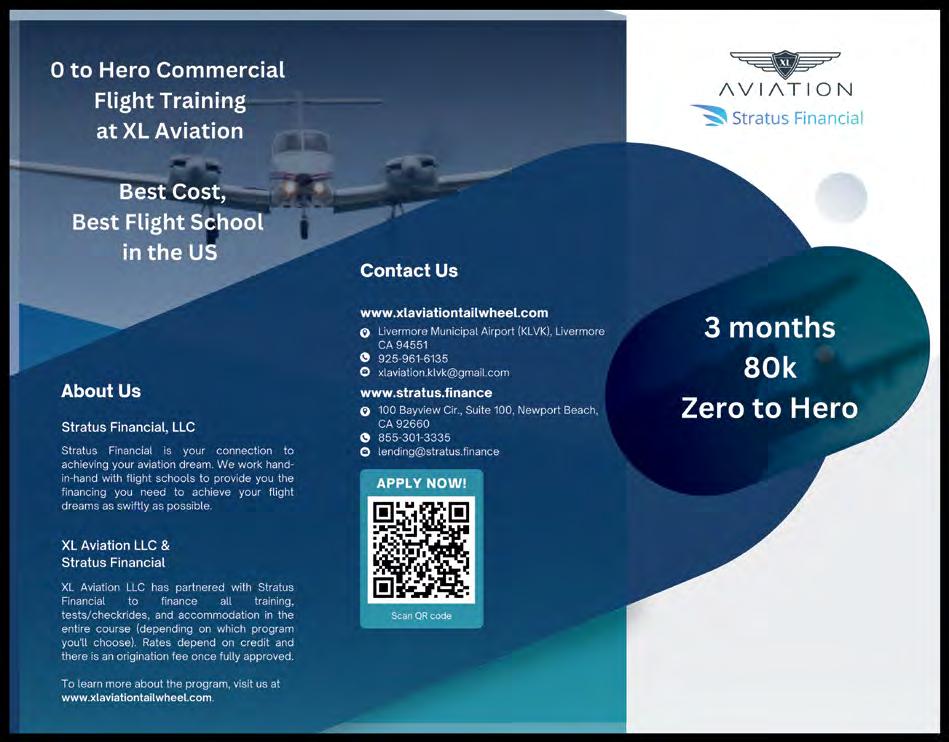
The Aircraft Owners and Pilots Association (AOPA) commended the House Transportation and Infrastructure Committee following its passage of the Mental Health in Aviation Act of 2025 on Wednesday, which aims to reform how mental health is addressed in the aviation community.
Key provisions in the bipartisan legislation, introduced by Reps. Sean Cas-
ten (D-Ill.) and Pete Stauber (R-Minn.), include:
• Requiring the FAA to revise regulations to encourage voluntary mental health disclosures and treatment.
• Calling for annual reviews of the special issuance process to expand treatment options and medications.
• Providing funding to recruit and train more aviation medical examin-
ers, including psychiatrists.
• Implementing recommendations from the 2024 Mental Health and Aviation Medical Clearances Rulemaking Committee.
AOPA served on last year’s Mental Health Advisory Rulemaking Committee and supported the recommendations put forward.
AOPA has advocated for a balanced approach to pilot mental health — one that protects aviation safety while ensuring pilots are not punished for seeking treatment.
To learn more, visit www.aopa.org.
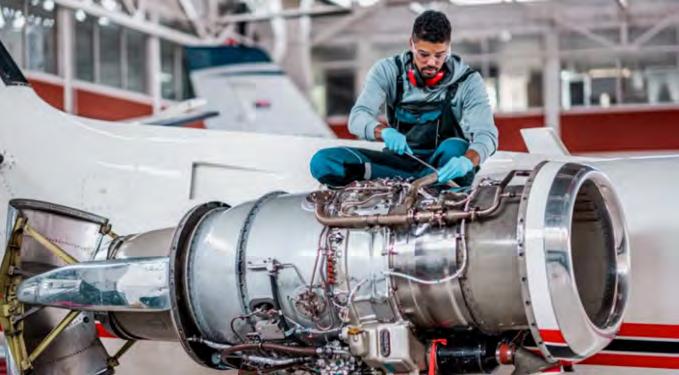
NBAA applauded the Trump Administration’s decision to return to the zero-for-zero tariff agreement for products from the United Kingdom. (Photo courtesy California Aeronautical University)
The National Business Aviation Association (NBAA) on June 17 applauded the Trump Administration’s return to zero-for-zero tariffs on aerospace products from the United Kingdom as part of a June 16 Executive Order (EO), Implementing the General Terms of the United States of America – United Kingdom Economic Prosperity Deal.
Under the EO, the 10 percent tariffs on aircraft and parts imports imposed on the UK through previous Trump-initiated presidential actions will no longer apply to these products.
The EO points to the 1979 Agreement on Trade in Civil Aircraft, which applies to over 30 countries and creates a zero-for-zero fair and reciprocal trade agreement in civil aviation. Under that agreement, no tariffs or duties are imposed on civil aircraft, engines or related parts. Participating countries also commit to maintaining a safety standard equal to the FAA’s certification and manufacturing standards.
NBAA President and CEO Ed Bolen said, “The 1979 Agreement on Civil Aircraft has had a profound impact on global aerospace advancement. In fact, civil avi-
ation in the U.S. aerospace industry has a $104 billion trade surplus, leading all other sectors, while providing 1.8 million U.S. jobs. The 1979 agreement has not only created a level playing field for the U.S. and other countries in aviation and aerospace; it has also had a direct impact on global safety in the sector.
“NBAA welcomes the Administration’s decision to return to the zero-for-zero tariff agreement for products from the United Kingdom, and strongly encourages the Administration to return to the 1979 Agreement on Civil Aircraft with the remaining participating countries,” Bolen added.
The EO is the result of the May 2025 General Terms for the United States of America and the United Kingdom of Great Britain and Northern Ireland Economic Prosperity Deal (“General Terms”), which outline a trade deal between the U.S. and United Kingdom. The EO instructs the Secretary of Commerce to publish formal notice of this policy in the Federal Register within seven days.
Learn more about NBAA at nbaa.org.
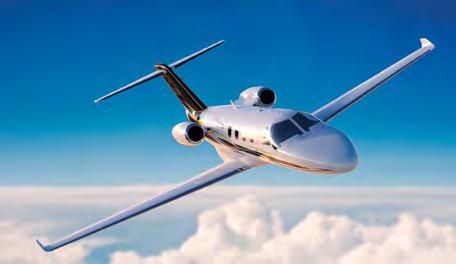
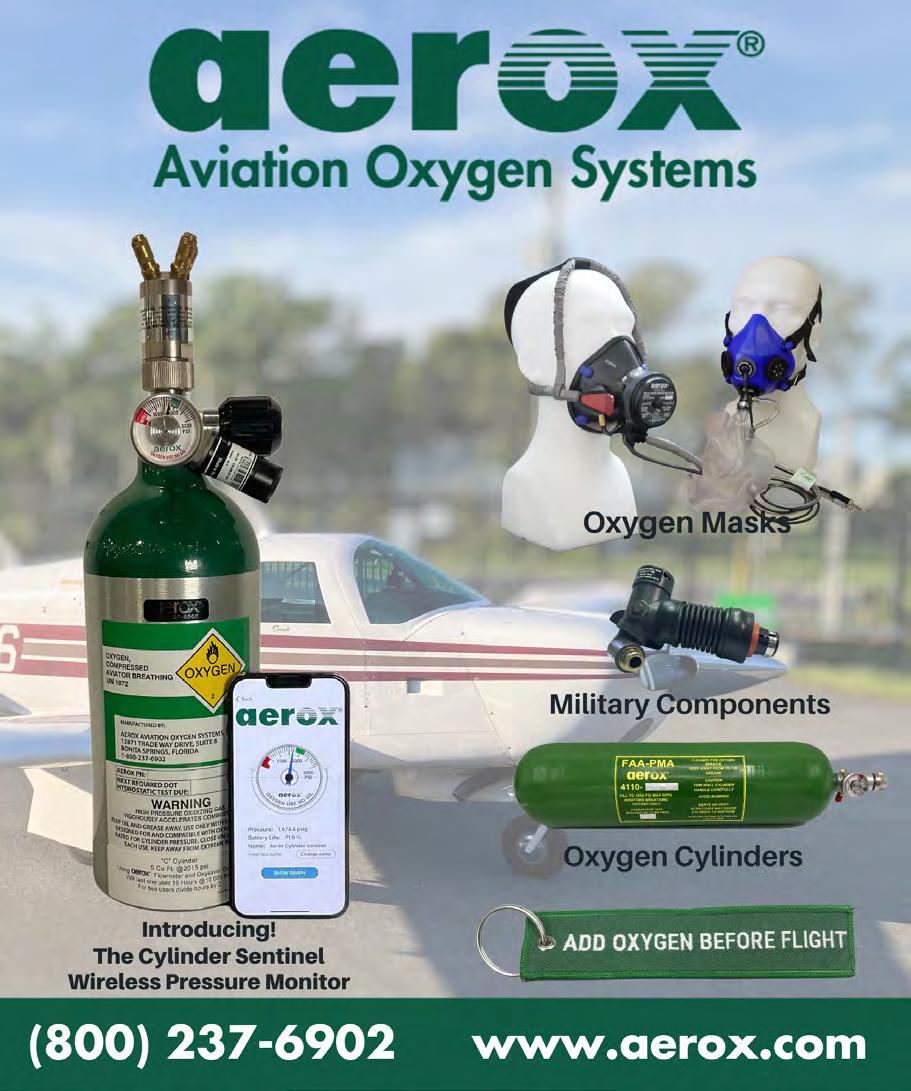
By Darren Pleasance, AOPA President and CEO.
RECENTLY MY CALENDAR has been full. I have had the privilege and pleasure to speak with many of you during my President’s Tour around the country, and in May, I spoke at a news conference with U.S. Department of Transportation Secretary Sean Duffy on the state of our airspace system.
As you know, the Trump administration has taken several steps to reform our entire government. But when it comes to aviation, we—and our lawmakers and regulators—understand that any reforms must be done thoughtfully and in a manner that futureproofs us as our aviation landscape evolves in the years to come. Over the years, and against enormous odds, AOPA has beaten back proposals to charge pilots to use the air traffic system and push toward privatization of our national airspace. When we started to see the changes the Trump administration was making, we feared the privatization fight might be rekindled. However, AOPA has been working behind the scenes to help bring the entire aviation industry together to suggest that it’s well past time to put that debate aside and focus instead on supporting the long overdue modernization of our ATC system.
We owe it to all of us who utilize this national airspace system to make it
as safe as it can be and to invest in the technology required to achieve that. I come from a tech background, and I appreciate how much the right technology can improve our effectiveness and safety.
AOPA has joined 56 other organizations that represent every sector of aviation in a unified push to modernize our existing system and increase the hiring and training programs for air traffic controllers. My appearance with Secretary Duffy as part of the Modern Skies Coalition reinforced our position. The Modern Skies Coalition, which is made up of a wide range of aviation stakeholders, endorses Secretary Duffy’s plan:
• Replacing antiquated communications equipment at more than 4,600 sites, which will include 25,000 new radios and 475 new voice switches.
• Replacing 618 radar installations that have exceeded their expected service life.
• Increasing the number of airports using technology to monitor aircraft movement on the ground to 200. The FAA expects to have the technology in place at 50 towers by the end of 2025.
• Building six new ATC centers for the first time since the 1960s, as well as rebuilding several towers and terminal radar approach control facilities.
• Installing new hardware and software for all ATC facilities.
• Installing 174 new weather stations
in Alaska.
I also sent a letter to Committee Chairman Sam Graves (R-Mo.), a good friend of AOPA, and Ranking Member Rick Larsen (D-Wash.) expressing your association’s strong support for modernization; it is a necessary investment in safety, efficiency, and economic competitiveness.
AOPA joins other organizations in backing this $12.5 billion proposal in Congress. While this is a big price tag, think of it as a downpayment for beginning to implement the needed changes that Secretary Duffy and the administration have been talking about. More money will be needed, and AOPA is ready to help make sure that modernization plans are fully funded and that accountability remains high so that today’s promises can become tomorrow’s reality.
It is so encouraging to see concrete steps finally being taken to address these critical issues. It represents a significant and overdue investment in the future of our national airspace. I look forward to working with Congress, the Trump administration, and other partners to build on this momentum.
Truly, with AOPA’s input, there are blue skies ahead!
darren@aopa.org
DARREN PLEASANCE has flown over 8,000 hours in more than 80 different types of aircraft.
Join me at events across the country. I will share my vision for the future of general aviation as well as AOPA’s mission to promote aviation and protect your freedom to fly
July 13 Wichita, Kansas
July 23 Oshkosh, Wisconsin (EAA AirVenture)
August 16 Akron, Ohio (Pistons and Props Festival)
August 23 Denver, Colorado
September 6 Dallas, Texas
September 27 Woodruff, South Carolina (Triple Tree Fly-In)
September 28 Nashville, Tennessee
October 12 Livermore, California
November 15 Indianapolis, Indiana
Schedule subject to change. Check the website for updates and more details. aopa.org/presidentstour
On June 16, the General Aviation Manufacturers Association (GAMA) announced that the team from Porter High School in Porter, Texas, is the first-place winner of the 2025 GAMA Aviation Design Challenge. The team from Cambridge High School in Milton, Georgia, is the second-place winner and the team from El Segundo High School in El Segundo, California, is the third-place winner.
“GAMA is very proud of all the teams that participated in the 2025 Aviation Design Challenge, and we continue to be impressed by the entries submitted. We congratulate Porter High School on winning the overall competition as well as Cambridge High
School and El Segundo High School for their top place finishes. GAMA looks forward to continuing to facilitate this remarkable program which provides students with the opportunity to learn about and apply the science of flight and aircraft design,” said James Viola, GAMA president and CEO.
More than 70 high school teams, representing 24 states, entered the 2025 GAMA Aviation Design Challenge. During the first portion of the challenge, teams used complimentary “Fly to Learn” curriculum to learn the principles of flight and airplane design, consistent with national STEM standards. During
the second portion of the competition, teams applied their knowledge to modify the design of an airplane and compete in a fly-off using X-Plane software.
This year’s mission was to modify a Cessna 208 Caravan to complete a test flight, carrying as much weight as possible, as fast as possible, in the Himalayas. The teams needed to design their aircraft to maximize speed and cargo weight to successfully navigate between two remote locations in high altitudes. Judges scored the teams based on test flight performance, a summary explaining design changes, a video submission summariz-
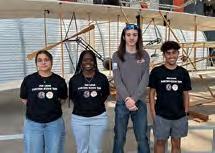
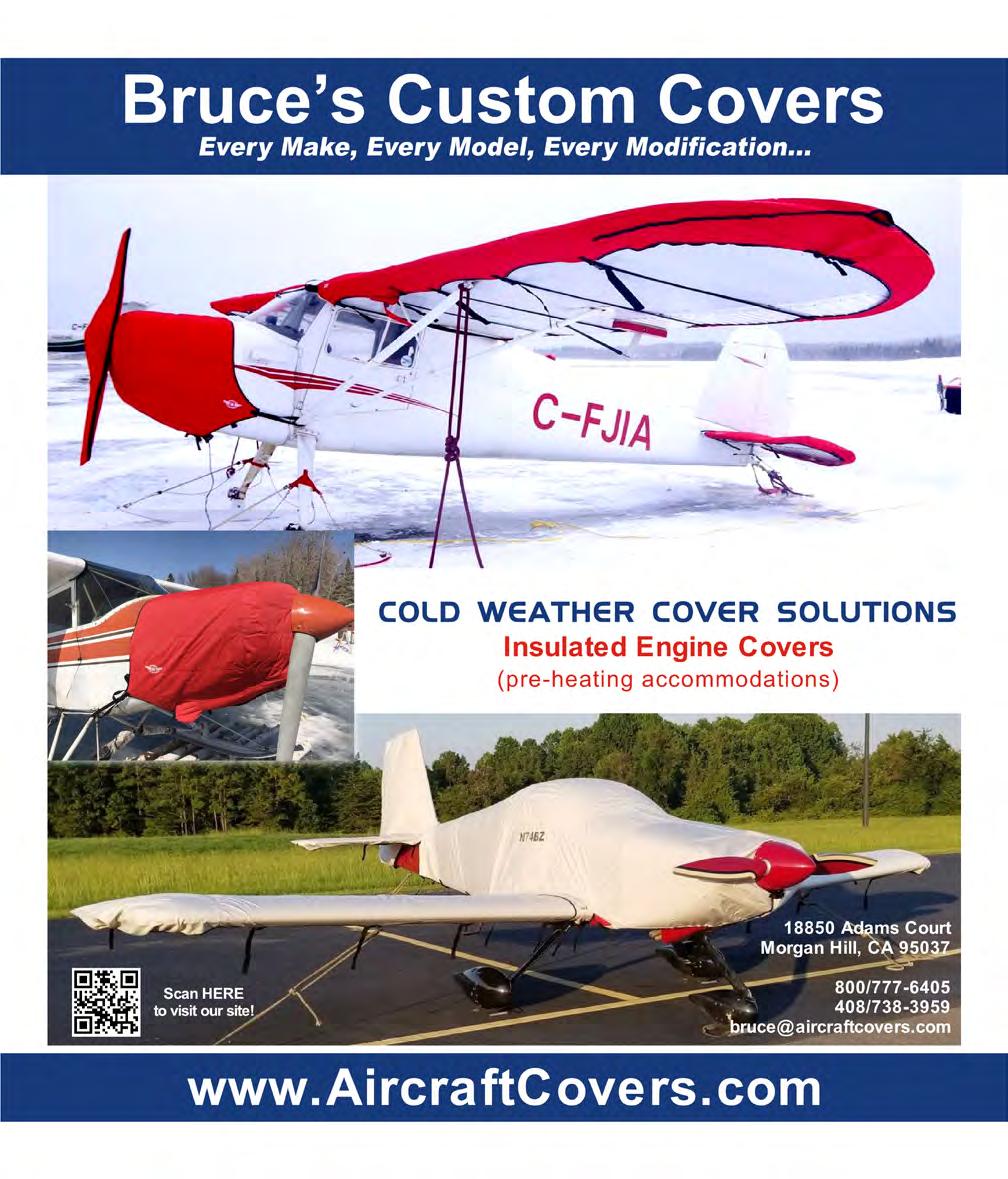
The FAA recently updated the MedXPress application portal to add more instructions for users. These changes are part of the FAA and industry’s ongoing education efforts to ensure that applicants are better prepared at the time of their exam with an FAA aviation medical examiner (AME), and additional improvements are planned.
MedXPress now includes prominent up-front instructions for applicants to look up their conditions in the Guide for Aviation Medical Examiners (AME
Guide), which contains application criteria and time-of-exam dispositions for most medical diagnoses. The FAA has also developed a new how-to pamphlet aimed at providing pilots with guidance on using the AME Guide, which has historically been a technical document written for medical professionals.
Following industry input, the guide has become gradually more user-friendly for the public over the past several years.
The FAA has signaled its desire
for additional improvements and EAA is currently participating in a working group mandated by Congress that is considering additional changes to the medical application process that go well beyond MedXPress. Along with other industry/FAA efforts, EAA seeks to modernize both the medical application and the standards by which applicants are evaluated.
Earlier this year, EAA joined a broad coalition of industry associations in publishing a checklist for the
FAA medical application. The guidance stresses completing as much “homework” as possible prior to the AME exam, and the new FAA literature on using the AME Guide further reinforces and explains this point.
Numerous forums at this year’s AirVenture, July 21-27 in Oshkosh, Wisconsin, will focus on helping pilots prepare for their FAA medical examination. Learn more at eaa.org/airventure. Learn more about FAA’s MedXPress at https://www.faa.gov/ame_guide.
By Senior Airman Brooke Keisler, 125th Fighter Wing Public Affairs
Behind the scenes of every successful airpower mission is a dedicated team of logistics professionals ensuring that personnel, equipment, and resources are precisely where they need to be at the right time. At the Florida Air National
Guard’s 125th Fighter Wing, based in Jacksonville, this critical role falls upon the shoulders of the 125th Logistics Readiness Squadron, a team who recently faced a monumental challenge: seamlessly transitioning from the legacy F-15 Eagle to the F-35A Lightning II fighter jet, a critical step in modernizing the Air Force for the future fight.
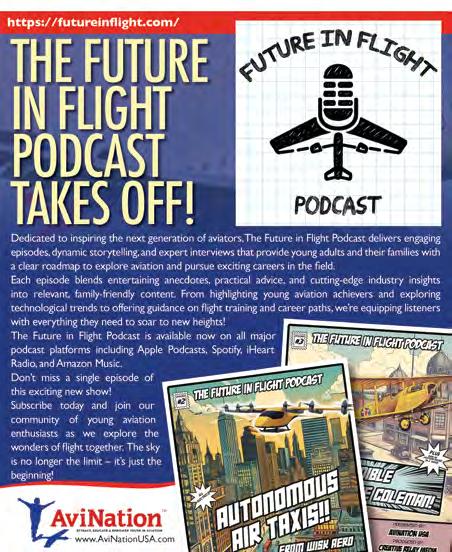
The arrival of the F-35 brought about significant changes, not only in terms of aircraft capability but also in the logistical demands placed upon the 125th LRS. Each of the squadron’s diverse sections –material management, the transportation management office, fuels management, deployment and distribution, and vehicle management – faced unique hurdles in adapting to the advanced technology and specialized requirements of the fifth-generation fighter.
This massive undertaking involved the strategic management and movement of thousands of aircraft components to various bases and storage facilities while simultaneously receiving and integrating thousands of new aircraft parts into the wing’s inventory.
“Our key successes during the conversion process include training personnel on the F-35’s logistics systems, ensuring major infrastructure upgrades, dispersing more than 15,000 F-15 parts
and equipment while receiving more than 8,000 F-35A repair assets and support equipment,” said U.S. Air Force Chief Master Sgt. Kylie Walker, the senior enlisted leader of the 125th LRS.
The material management department played an integral role in meticulously sorting, cataloging, and storing the influx of F-35A components. Simultaneously, TMO coordinated the movement of aircraft parts and equipment throughout the U.S., ensuring timely delivery while minimizing disruptions to the wing’s operational tempo.
To enhance support for the 125th Fighter Wing’s F-35A mission and strategic goals, various 125th LRS Airmen travelled to multiple F-35A units within the U.S. to observe how their Air Force colleagues managed the aircraft’s specialized parts and maintenance procedures within their respective units.
Continued on Page 45
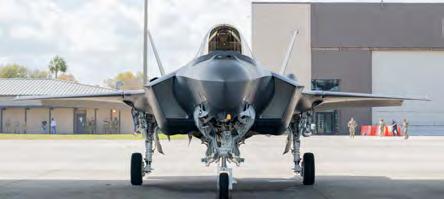
Continued from Page 40
ing what they learned and a checklist describing steps for the test flight.
Members of the first-place team from Porter High School include Jocelyn Alfaro, Alex Espada, Major Renard and Eris Rodgers. The team’s design changes included an increased wingspan with the addition of leading-edge slats, propeller modifications to improve efficiency and adoption of a T-Tail configuration. Their report went into remarkable detail about their flight testing and piloting techniques to mitigate challenges from the design and conditions. The team’s first-place prize includes a CubCrafters Manufacturing Experience, demonstration flight opportunities and much more.
When asked about this year’s competition, George Gowdy, the Porter team’s teacher said, “The GAMA Aviation Design Challenge represents more than just a competition win, it’s opened doors to a hands-on experience with general aviation manufacturing that will shape these students’ futures. Their success demonstrates the power of engaging STEM education and proves that our students have what it takes to grow into the next generation of aerospace innovators.”
The second-place entry from Cambridge High School elaborately demonstrated their reasoning behind design changes, which included increased wingspan and wing chord adjustments, stabilizer adjustments and propeller modifi-
cations to improve efficiency. They will receive a two-day Redbird Flight STEM Lab.
The third-place entry from El Segundo High School illustrated an intricate design with trial-and-error details and reasoning behind continued modifications towards the final configuration for the mission. They will receive one-year ForeFlight Performance Plus subscriptions and a facility tour of Robinson Helicopter Company.
The 2024 Aviation Design Challenge sponsoring companies include Bombardier, Cirrus Aircraft, CubCrafters, Embraer, ForeFlight, Garmin, Gulfstream Aerospace Corporation, Hartzell Propeller, Jet Aviation, Pipistrel by Textron eAviation, Redbird Flight, Robinson Helicopter Company, Signature Aviation, Textron Aviation and Wipaire. Sponsors provide financial support for the curriculum, software and prizes as well as inkind donations.
“GAMA is grateful to all of our sponsors as the success and growth of the Aviation Design Challenge is attributable to their tremendous commitment to furthering youth outreach. We look forward to rewarding the hard work of our winning teams with the experiences that are made possible by our sponsors,” Viola said.
To learn more about the organizations involved in structuring the competition, visit gama.aero and flytolearn.com.
Continued from Page 21
tion, but are a major factor in broader system outages like those that have recently hamstrung the Northeastern U.S.
“The delays and safety concerns caused by aging technology make clear that system transformation is no longer an option – it’s an absolute ‘must do’ if we are going to continue to efficiently and safely manage operations today, and in the decades to come,” Bolen said.
As part of the Ihe Industry Day discussion, new initiatives were considered, including an Enterprise Challenge for transformation that would model the recent, accelerated NOTAM update as a template for targeted investments to upgrade other parts of the system, including facilities, equipment and technologies.
Also discussed was a service model under which contractors selected to develop and install new technologies and rebuild facilities would also commit to


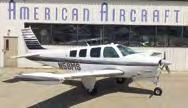


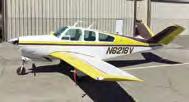




continual upgrades over the course of their service contracts.
Bolen and the other meeting participants welcomed a discussion on those concepts, and others with the potential to smooth the introduction of new ATC technologies and other assets while preserving safety standards.
“Now more than ever, the U.S. requires an efficient, redundant, resilient ATC system to enable continued growth and innovation in aviation,” Bolen concluded. “We look forward to moving ahead with the strategic planning and essential work identified in today’s gathering.”
For more information, visit the FAA website at faa.gov, the DOT website at transportation.gov and the NBAA website at nbaa.org. Or watch remarks by Duffy and Rocheleau on YouTube at https://www.youtube.com/watch?app=desktop&v=CmPDsx4e5Qw&feature=youtu.be.



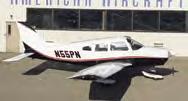


AIRCRAFT FOR SALE
American Aircraft Sales, Livermore Airport, CA, americanaircraft.net, cell (510) 783-2711, (925) 449-5151. 3/13
From Trade-ins to Aircraft Management, financing and appraisals. T.J. Aircraft Sales, Novato, CA, (415) 898-5151, tjair.com. 3/13
AirplanesUSA Aircraft Sales, San Carlos, CA, Airport, (650) 394-7610, airplanesusa.com. 1/16
Quality aircraft since 1948. Volare Air, a TECNAM dealership, (940) 800-8020, volareair.aero. 1/23
Historically significant 1950s-era aircraft for sale or trade. All in restorable condition with minimum corrosion. Inventory includes a Piasecki XHJP-1 and a Sikorsky S-55. American Helicopter Museum, West Chester, PA. Contact info@americanhelicopter.museum for more information. 231000.TFN
1968 Nanchang CJ-6 Chinese warbird. Reliable Day/VFR, light weight. Apollo GX-65 nav/com, Digital Xpndr., intercom, Delco alternator. New seat cushions and canopy glass. Includes all support equipment, wing jacks, manu- als, spare parts. Much more! $70,000. Located N. Calif., text/cell (530) 957-9760, dennis@nickson.biz. 24900:11
1966 Piper PA30 Twin Camanche for sale near Oceanside, CA. Call for pricing. Andrew Wignot, (760) 717-0640. 241100:12
Small Manned Aerial Radar Target, Model 1. Tiny jet aircraft, long-range tank. SMART-1, Tucson, AZ, (202) 2132400, smart-1.us. 5/21
SPORT/ULTRALIGHTS
RV12i5. Total performance perfected. Easy to build, fly and own. Van’s Aircraft www.vansaircraft.com. 11/18
Bristell LSA 915 Turbo, 180 mph @18,000. Bristell Aircraft, (516) 6581847. bristellaircraft.com. 2/24
STOL
The STOL Super Breezy with fully covered fuselage. Yakima Aerosport, (509) 453-3412, superbreezy.com. 5/23
AIRCRAFT SALES AIDS
Aviation Sales & Marketing by ABCI. Ideal for a startup or side hustle in the aviation industry. (702) 987-1679 or aviationsalestraining.com/startup. 1/21
FLIGHT INSTRUCTION
Sunshine Flyers. Flight & tailwheel instruction, rentals, mountain flying, and aerobatics., Auburn, CA, (530) 8203442, sunshineflyersaviation@gmail. com. 3/20
Arizona Type Ratings
CE-500/CE-525 type ratings or recurrent. Insurance approved, staff examiner. arizonatyperatings.com, (602) 6147994. 9309:TFN
Recurrent pilot training and services. L/D Aerospace, Grace Passmore, (916) 790-0501, ldaerospace.com. 1/22
Fly for fun or career. Discovery flights, pilot training, AOPA Distinguished Flight School & Cessna Pilot Center. Smith Aviation, Napa County Airport, (707) 345-6526, mikesmithaviation.com. 4/22
Come fly with us! CFIs encouraged to apply. For more information, call Sue Clark/RV to the Rescue at 925-997-4778
XL Aviation - Aircraft Maintenance.
Custom-tailored programs for all aircraft. Livermore, CA, (925) 961-6135, xlaviationtailwheel.com. 8/20
Iconic Aircraft Restoration. Repairs, refurbishments, parts fabricated, consulting at reasonable rates. The Wright Experience, (540) 379-9092. 8/21
Custom aircraft & high-quality composite parts. Aviation Composites, Sandersville, GA, (937) 243-7303. 1/22
Serving the GA Community since 1981. Wisconsin Aviation, Watertown Municipal Airport, WI, (920) 261-4567, WisconsinAviation.com. 3/13
World’s largest network of FBOs with over 200 locations offering consistent, exceptional service. Signature Flight Support, signatureflight.com. 4/23
Full-service center. Vista Aviation, Whiteman Airport, Pacoima, CA, (818) 896-5224, vistaair.com 9/23
AVIONICS
Avionics for Every Mission. All major brands. Airtronics, Calaveras County Airport, CA, airtronicsavionics.com, (209) 736-9400. 11/14
Basic installs to complete panel and glass retrofits. Pacific Coast Avionics, (800) 353-0370, PCA.aero. 7/15
Update your avionics. FAA-Certified repair station. Treasure Coast Avionics, Ft. Pierce, FL, (772) 464-3148, treasurecoastavionics.com. 2/23
AIRCRAFT PARTS
Keeping “classic” aircraft flying since 1946. Univair Aircraft Corp., Aurora, CO, (888) 433-5433, univair.com. 3/21
Iconic Aircraft Restoration for all the classics. Reasonable rates. The Wright Experience, (540) 347-1909. 2/23
SAVAGE Magneto Service since 1946. Hayward, CA, (510) 782-7081, 2/23
Wingtips with total lighting solutions, aveoengineering.com. 9/23
PROPELLERS
Aviation wood, composite or metal propellers. Sensenich, (813) 752-3711, (717) 569-0435 or sensenich.com. 4/21
OXYGEN SUPPLIES
Cannula or Mask? For aircraft service ceil- ings to FL180 & FL250. Ask “The Oxygen Lady,” info@aviationoxygen.com 2/23 4720:TFN

FUEL
Fuel Cells. Repair, overhaul or new with 10-year warranty. Hartwig Aircraft Fuel Cell Repair, hartwigfuelcell.com. 2/09
Home of GAMIjectors® fuel injectors! STCs and PMAs on over 300 different engine models! General Aviation Modifications, Ada, OK, (888) 359-4264, (580) 436-4833, gami.inc. 3/23
AVIATION SAFETY
Innovative aviation safety solutions and Parachute Recovery Systems for a variety of aircraft, including for sport, UAVs, more. AviationSafetyResources. com. 2/22
Get ahead of your daily in-flight risks with SAFETYLINQ flight risk assessment. argus.aero/safetylinq. 1/22
Get Top Retail Value for Your Aircraft! Sell now! Find your dream aircraft! Shop now! Become an area broker with one of the largest networks in the U.S.! Visit our USA Aircraft Brokers page on Facebook or visit usaaircraft.com. 9/23
Specializing in personal, business and charter aircraft. Best price, coverage & customer service. Zanette Aircraft Insurance Center, (650) 593-3030, (888) 723-3358. 10/06
Insurance solutions for all aviation-relat- ed services. Business Aviation Insurance, bizavins.com, (925) 8251900. 7/20
Informed, accurate aircraft appraisals. jetvaluesjeremy.com, (636) 751-3987. 7/20
Complete Aviation Sales & Marketing Services. Use Promo Code “INFLIGHT” to save 10%. AviationBusinessConsultants.com/Lab, (702) 987-1679. 4/23
PILOT SUPPLIES
No cheap imitation watches at HME! Special pricing on ATP series multifunctional watches with Altimeter. To order or for information, (323) 464-6660 or hmewatch.com. 11/16
Aircraft Spruce & Specialty. Free 700page catalog, Corona, CA, & Peachtree City, GA, aircraftspruce.com. 10/06
Protective covers for every make and model. Bruce’s Custom Covers, Morgan Hill, CA, (800) 777-6405, (408) 738-3959, aircraftcovers.com. 10/19
Apparel as unique as your journey. Discounts to members. AOPA Pilot Gear, aopapilotgear.com. 9/21
Mountain Bike, Full-size, pilot-friendly, rugged. FLATBIKE, flatbike.com. 10/18
AVIATION RESOURCES
Emergency services, group trips, consulting services. BizAvJets, Inc., Business Aviation Services, bizavjets.com, (702) 465-2027. 10/20
Wherever business takes you. Navigate It. (575) 615-2091, vatit.com. 10/21
Scheduling Software that connects to your flight department. Simple, affordable. airplanemanager.com. 9/22
PROFESSIONAL SERVICES
Aero & Marine Tax Pros
Legally avoid sales tax on your aircraft purchase. In El Grove, CA, (916) 6919192, aeromarinetaxpros.com. 18500:TFN Left Seat Pilot Medical Solutions. A confidential solution for pilot medical certification. Free FAA medical consultations. Left Seat, (800) 699-4457. 1/21 Global Aircraft Group. USPAP bank values for all aircraft, aircraft manage- ment, insurance claims & certified aircraft appraisals. Mark Parry, (855) 6GBL- AIR, (413) 335-7507. 4/22
At Thirty1 Hybrid, we help aviation companies, including flight schools, manufacturers, mechanics, brokers, and more, build a cohesive website that positively impacts their bottomline. And it’s not just a website — it’s an Experience. We’ll take your prospects on a journey they’ll love (and you’ll love, too — because the final destination is a new client and more money in your pocket). It’s a win-win for everyone! Contact us today at hello@thirty1hybrid. com or by visiting thirty1hybrid.com. 24500:6
HANGARS/TIEDOWNS
One-piece doors. Hydraulic or bifold. Schweissdoors.com, (800) 746-8273. 1/15
Aviation Building Systems, custom designed hangars. R&M Steel Co., Caldwell, ID, (208) 454-1800, aviationbuildingsystem.com, (866) 454-1800 51217:TFN
New Runway & Taxiway Homesites Available in amentity-rich community, Granbury, TX. From $179,900. Pecan Plantation, AviationHomesites. com, (833) 273-2159. 2/24
BUSINESS OPPORTUNITIES
Become an Aircraft Broker — #1 Largest USA Network of Aircraft
Start with USA’s proved system for listing and selling everything from high-performance single-engine airplanes, cabin class through jets, and helicopters & jet fractional shares. Includes multi-million-dollar inventory to start. Complete turnkey proved system. No experience necessary. Will train. Licensed USA Aircraft brokerage. Call (504) 723-5566 or visit Business Opportunity Section at usaaircraft.com. 4208:TFN
Free avgas 100LL and free tie-down parking in exchange for help with projects for an airport in Southern California. Email: wignot@hotmail.com. 23600:TFN
ART/VIDEOS/GIFTS
Specializing in aviation photography. horizontalrain.com. 1/15
Need a gift? Give a ride in an open cockpit biplane. WACO Air Museum, Troy, Ohio, wacoairmuseum.org, (937) 335-9226. 20601:TFN
Fly By Wire Air, a one-stop site for aviators.flybywireair.com. 4/21
Aces High Aviation & Military Art. (800) 528-0887, aceshighgallery.com. 10/21
Shirts Made to Fly. Unique, original fabrics embedded with your sectional chart. Save 20% with “INFLIGHT20” code. PilotQuarters.com. 2/24
PUBLICATIONS
Avionics Checklists & Quick Reference guides. Available in book, card & new iPad editions. qref.com. 8/14
SEAK, Expert Witness Directory, by Bert Botta for aviation accidents and incidents. (415) 320-9811, bert@bertbotta. com, bertbotta.com. 4/22
“Ghosts,” Phil Makanna’s legendary warbird calendars are back! Visit ghosts. com, (800) 331-8231. 2/23
New Pocket guide to avoid pain & stiffness during travel by a leading pain expert. “Pain-Free Vacation/Travel,” (980) 785-8128, goptfirst@gmail.com. 2/4
436-9600 americanhelicopter.museum Florida Air Museum (Aerospace Discovery) Lakeland, FL, (863) 904-6833 floridaairmuseum.org, flysnf.org War Eagles Air Museum Santa Teresa, NM, (575) 589-2000 wareaglesairmuseum.com
Warhawk Air Museum Nampa, ID, (208) 465-6446 warhawkairmuseum.org
National WASP WWII Museum Avenger Field, Sweetwater, TX (325) 235-0099, waspmuseum.org Hiller Aviation Museum San Carlos Airport, CA (650) 654-0200, hiller.org Owls Head Transportation Museum Owls Head, ME (207) 594-4418, owlshead.org
Planes of Fame Air Museum Chino, CA, (909) 597-3722 planesoffame.org Palm Springs Air Museum Palm Springs, CA (760) 778-6262, psam.org DONATIONS Needed! Non-profit youth aviation program teaching High School kids to build a Zenith 750 Cruzer — then learn to fly in it! It’s 70% completed. Need a usable O-200 engine to make kids’ dreams come true! Full value tax benefit. Bill (818) 634-9762.
The 55th edition of the International Paris Air Show, held from June 16 to 22, 2025, once again demonstrated its unique ability to bring together the global aerospace industry and foster exchanges between manufacturers, institutions, and international partners.
Space took center stage in a brandnew setting, the Paris Space Hub, visited by the President of the French Republic on June 20.
The event also contributed to showcasing the excellence of the French aerospace sector, both to French citizens and on the international stage.
Highlights:
• Officially opened by the French Prime Minister on June 16, the Show – with its exceptional scale across exhibition halls, chalets, static displays, and flight demonstrations – has been recognized as a major national event, on par with the Paris 2024 Olympic Games.
• It attracted a record number of 305,000 unique visitors, 53 percent of whom were from the general public.
• It hosted 2,400 exhibitors from 48 countries, including 46 percent from France.
• The Show welcomed no fewer than 400 official delegations, both civilian and military, from France and abroad, as well as 15 French ministers and secretaries of state.
Continued from Page 42
“This effort improved logistical decision-making for F-35A parts and equipment induction, and F-15 asset dispersal,” said Walker. “In addition, it kickstarted our initiative for heightened operational efficiency, continuous improvement, and timely parts delivery, crucial for maintaining readiness, reducing downtime, and meeting strategic objectives.”
This knowledge transfer proved instrumental in streamlining processes,

Exhibitors and Aircraft
• 2,400 exhibitors from 48 countries, including 1,124 French companies
• 136 start-ups
• 332 chalets and 100 percent of halls sold
• 70 hectares of exhibition space
• 155 aircraft displayed and 173 flight demonstrations
Visitor Attendance Up to 305,200
• 141,000 unique trade visitors, 38 percent of whom were international
• 164,200 general public visitors
400 Official Delegations and 2,200 Accredited Journalists:
The Show was inaugurated on June 16 by Prime Minister François Bayrou and visited by President Emmanuel Macron and 15 French ministers and secretaries of state.
80 official civil delegations attended at the invitation of the French Ministry of Transport, representing 64 countries and 5 international organizations, including:
• For the first time, a delegation from ICAO led by its President and Secretary General
• 12 civil aviation ministers
• 62 directors general of civil aviation
174 official military delegations were present at the invitation of the French Ministry of the Armed Forces, representing 77 countries and 5 international organizations, including:
• 17 ministers
• 9 deputy ministers or secretaries of state
• 36 chiefs of staff
• 26 directors general of armament
149 other institutional delegations, both French and international, also attended, including:
• 20 from EU institutions, including 4 European Commissioners and a Director General from the European Commission
• 3 from NATO
A total of 2,200 media representatives from 67 countries were accredited.
When the Aerospace Industry Opens to the Public
The Show featured numerous public events aimed at promoting industry dialogue, spreading scientific and industrial culture, and strengthening the appeal of a world-class French sector—one that innovates, creates value, decarbonizes, ensures defense and security, trains and recruits widely.
Highlights included:
• The Paris Space Hub
• The Paris Air Lab
• Start-Me-Up
• The Avion des Métiers, which welcomed 7,000 school students throughout the week
• L’Aéro Recrute
• The Women in Aerospace and Space initiative
• A week-long major aerial show
• A three-day popular celebration of Aerospace and Space
More information is available in the press kit released on June 5, available in the press section of www.siae.fr. Ε The next International Paris Air Show will take place from June 14 to 20, 2027.
refining decision-making, and ultimately improving the speed and efficiency of F-35A parts delivery. Having critical components readily available on-base lowers shipping delays and downtime, enabling faster repairs.
“Instead of waiting for supplies to ship from a warehouse, it’s already here on base,” said Master Sgt. Matthew Cole, the noncommissioned officer in charge of TMO for the 125th LRS. “If maintenance needs to order it, supply can deliver it within minutes. The aircraft will then be mission-ready quicker.”
Beyond the immediate logistical hurdles, the F-35A conversion serves as a valuable training opportunity for Airmen who must take on the complexities of deployments and real-world operations across the globe.
The 125th LRS continues to adapt, innovate, and strive for excellence, knowing their work is essential to maintaining the 125th Fighter Wing’s combat readiness and ensuring the U.S. Air Force maintains its competitive edge in an increasingly complex security environment. LRS Airmen remain committed to
continuous process improvement, seeking ways to further enhance their support for the fifth-generation fighter.
“Our goal is to ensure all personnel are proficient in supply and logistics systems to support the new airframe,” said Walker. “We aim to cultivate an environment of continuous learning and improvement to stay ahead of technological advancements and operational requirements.”
For more information about the wing’s F-35A Lightning II conversion, visit www.siae.fr/en/

Unlike FAA Medical Examiners or other pilot groups, Pilot Medical Solutions activates our exceptional team of experts to confidentially support and resolve your FAA Medical certifications challenges.
Pilot Medical Solutions is the only service which collaborates with private physicians to produce documentation required by the FAA. Other services typically only list FAA requirements, Pilot Medical Solutions helps you comply with them.




"The professionals at Pilot Medical Solutions provide superior, pilot-focused services and help during your time of need. I would, without hesitation, recommend their services to an airman in need."
– Anthony Ison, Aviation Attorney
"Because they assist you in getting your records properly prepared and walking the information through the FAA, they can often accomplish in days what may take months for other sources, including your AME, to do."
– Erwin L. Samuelson, M.D
"I can strongly recommend Pilot Medical Solutions for consideration because they are sympathetic to pilots with medical certification problems. Pilot Medical Solutions also organizes the records which supports the FAA’s requirements."
– Bob Hoover
“They do all the
while we get the
and the
from the
They are
and make
a




F l i g h t s d e p a r t f r o m o u r C h i n o A i r p o r t
l o c a t i o n f o r a 2 0 - m i n u t e f l i g h t t h a t y o u ’ l l
r e m e m b e r f o r y e a r s t o c o m e . F o r c o m p l e t e i n f o r m a t i o n v i s i t o u r w e b s i t e t o d a y .



